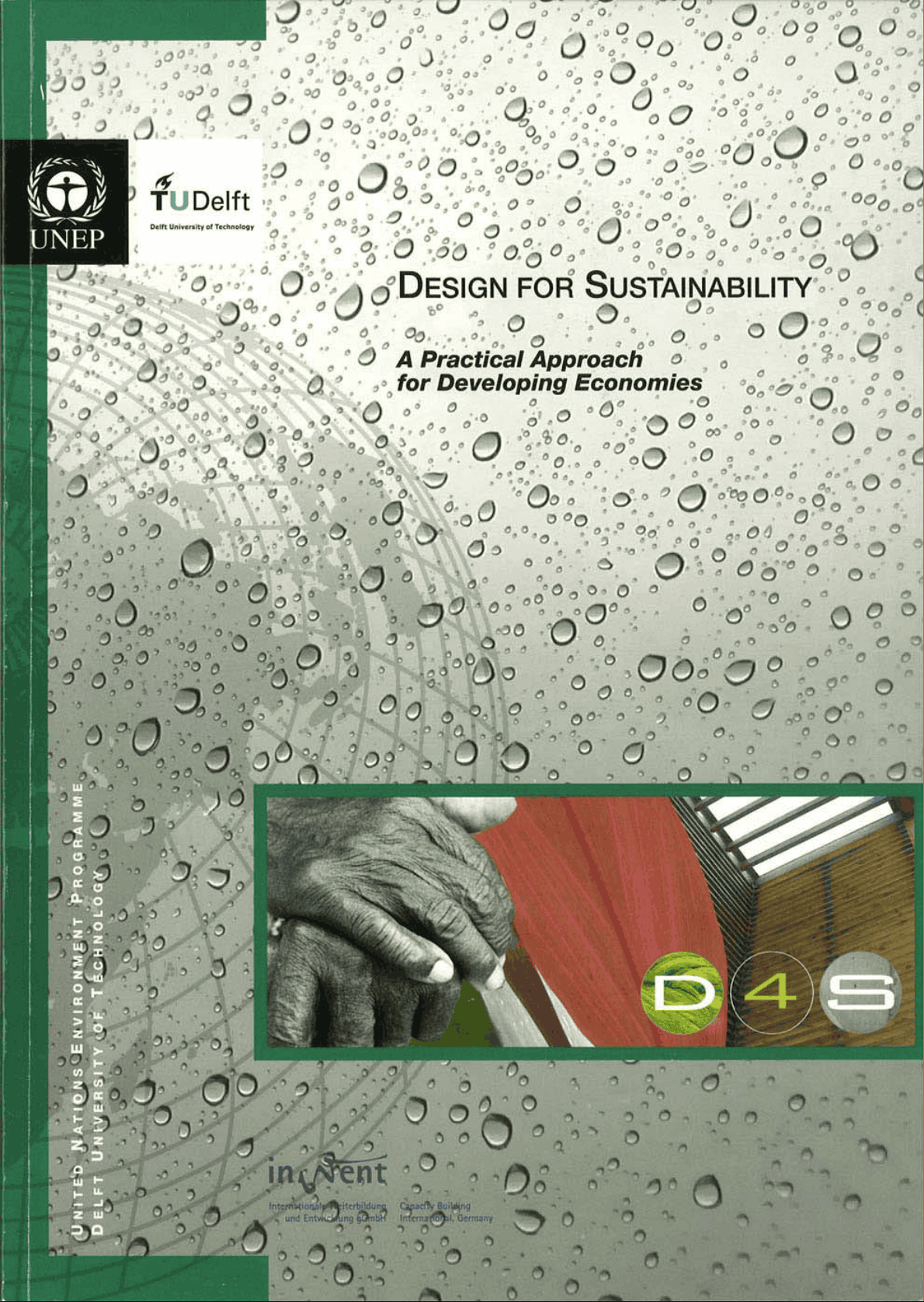
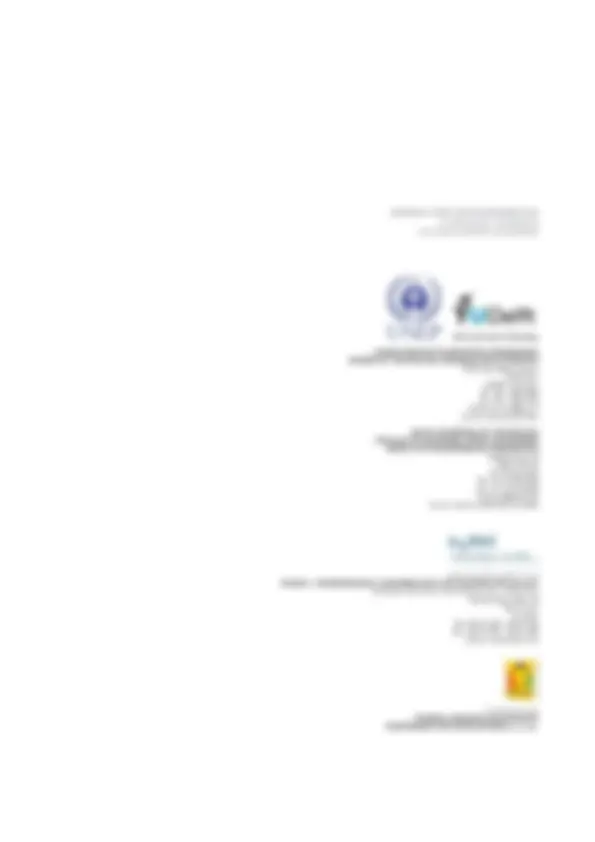


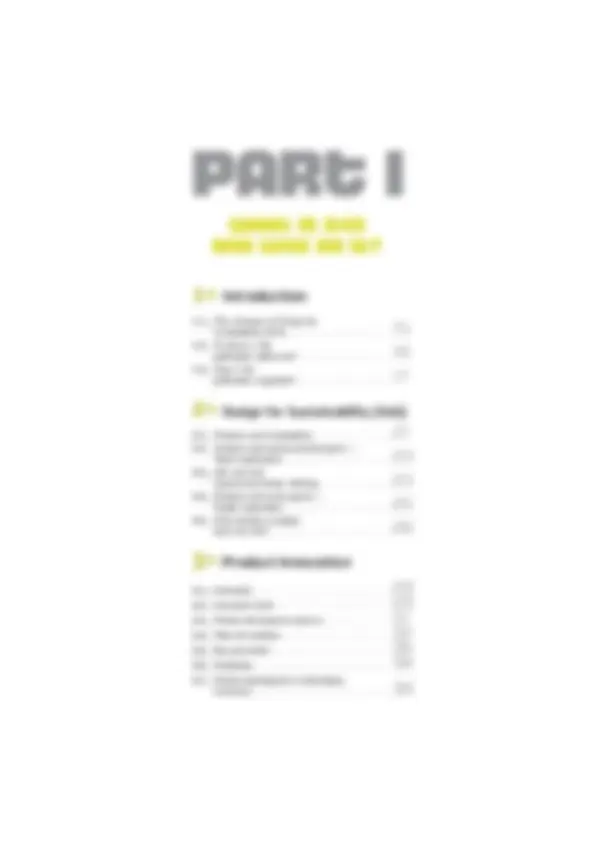
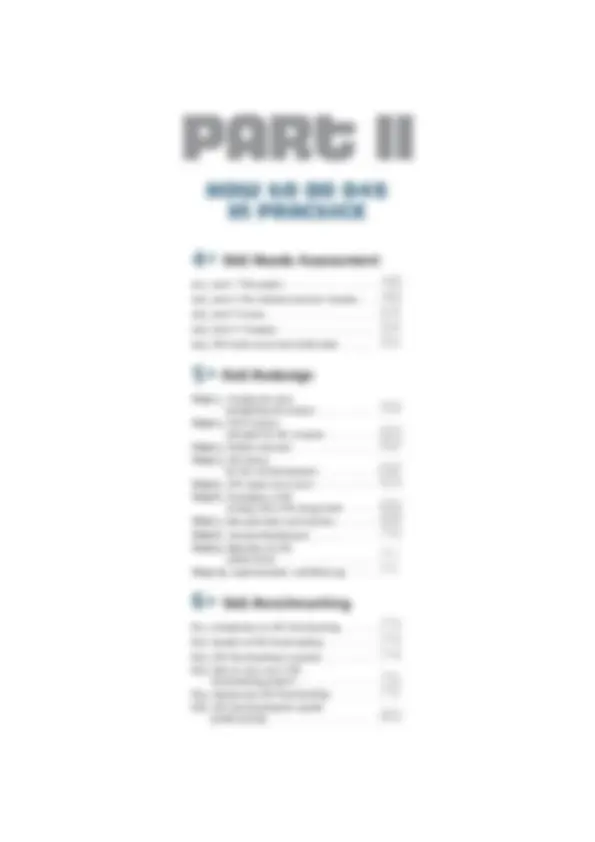
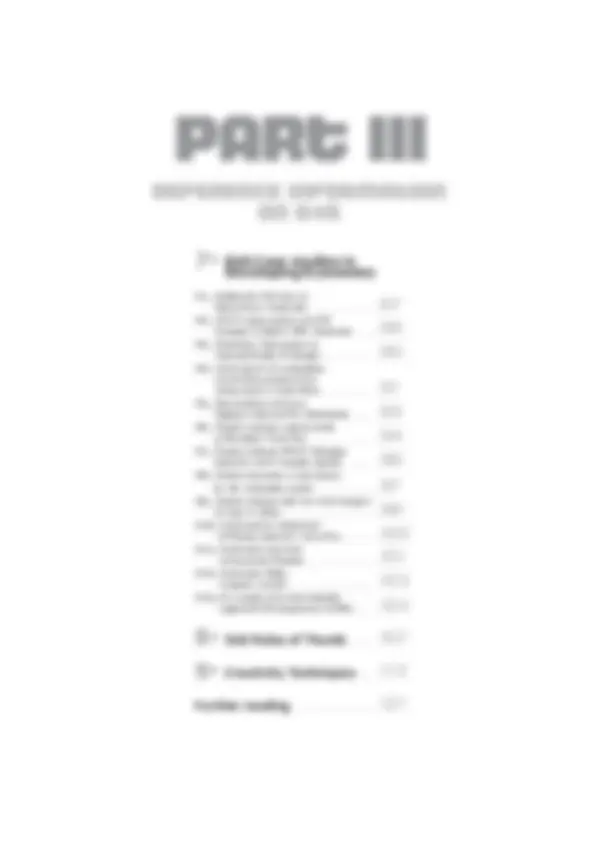



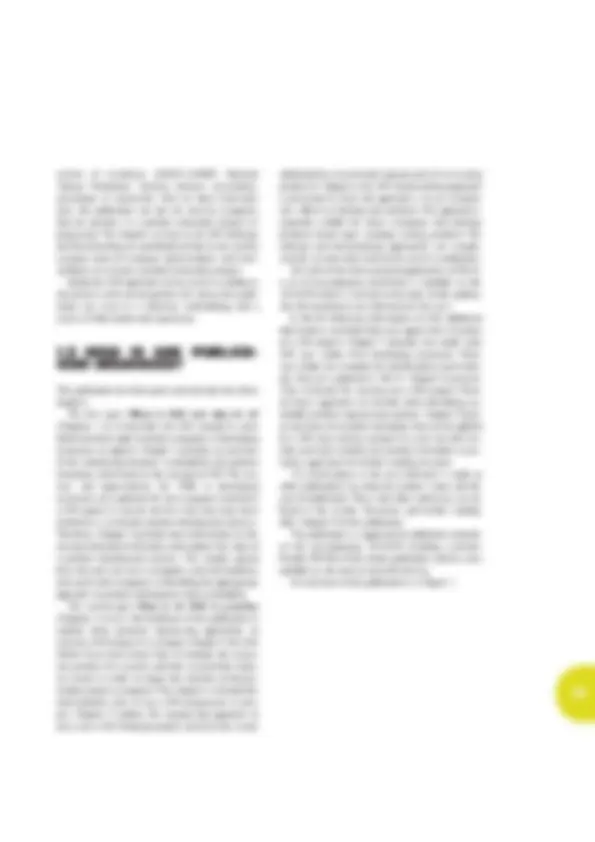

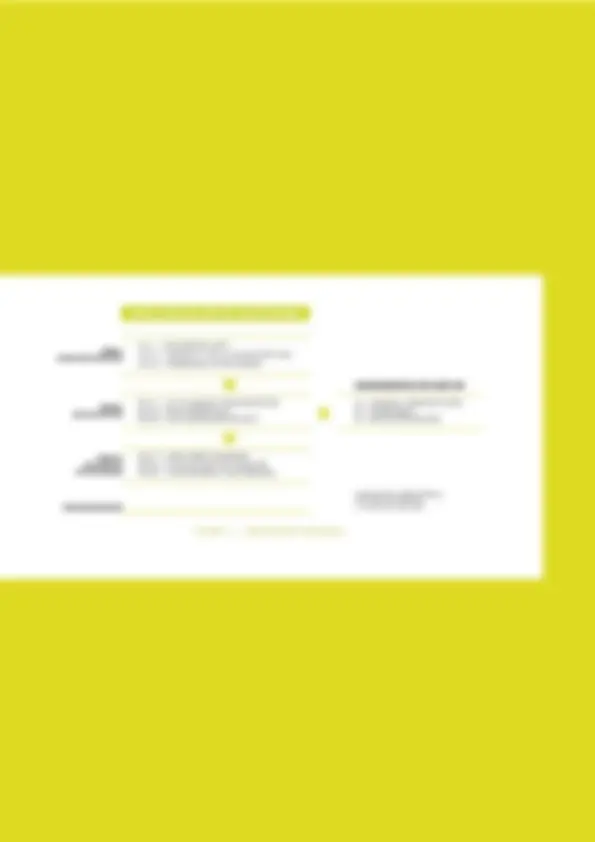

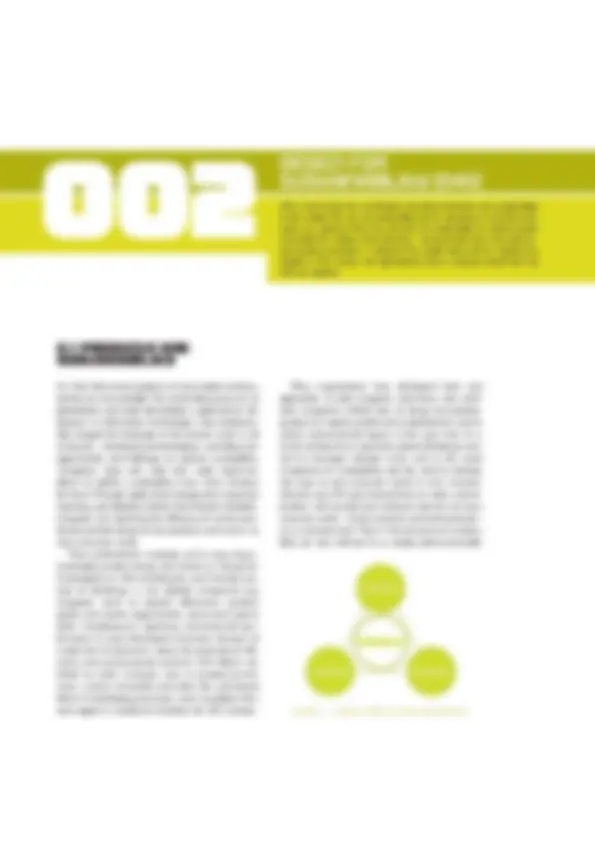
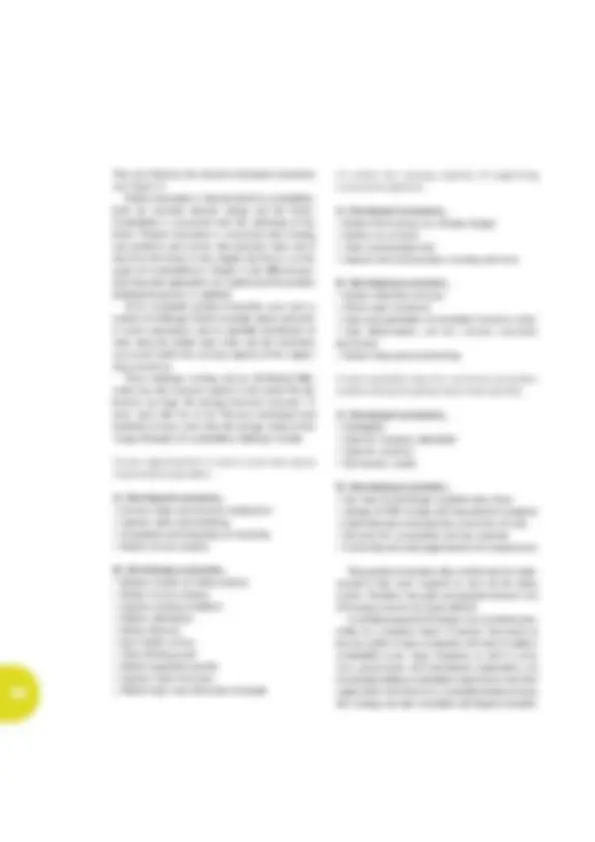
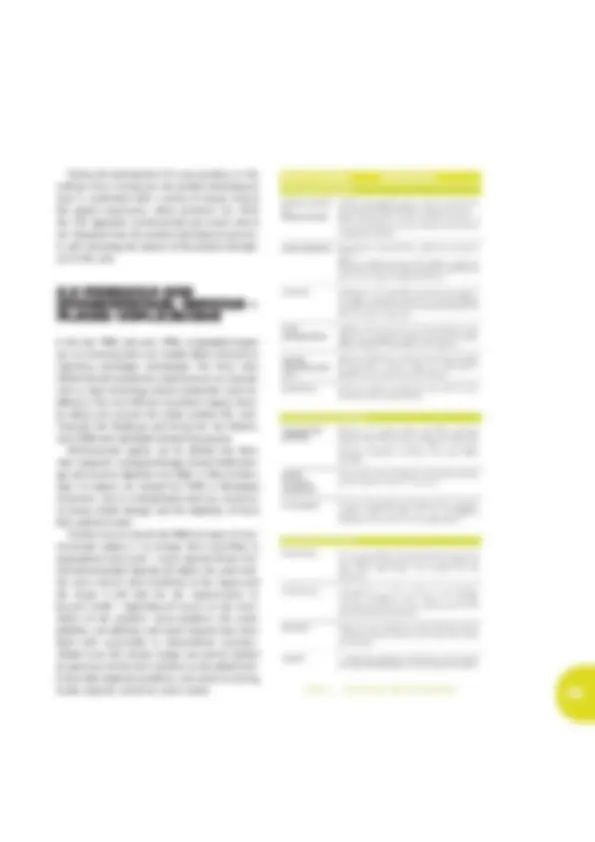

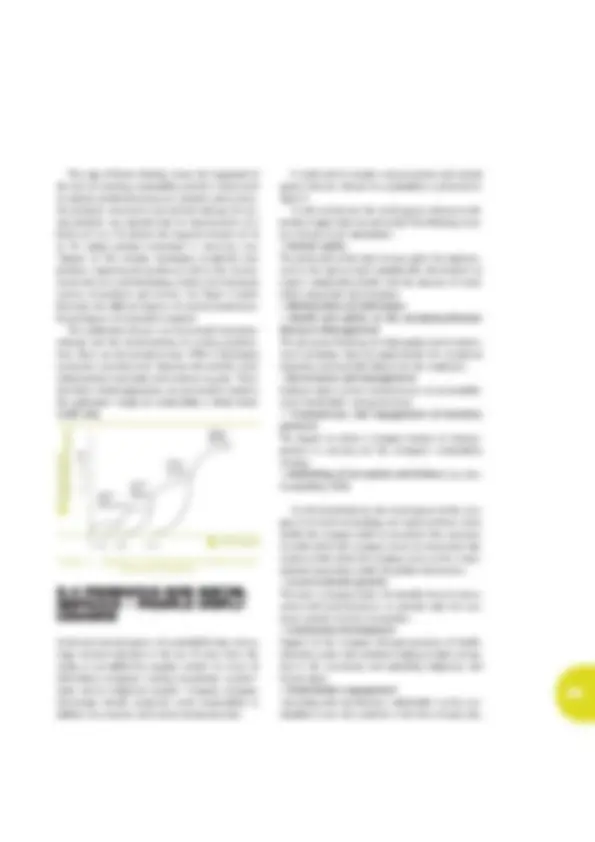
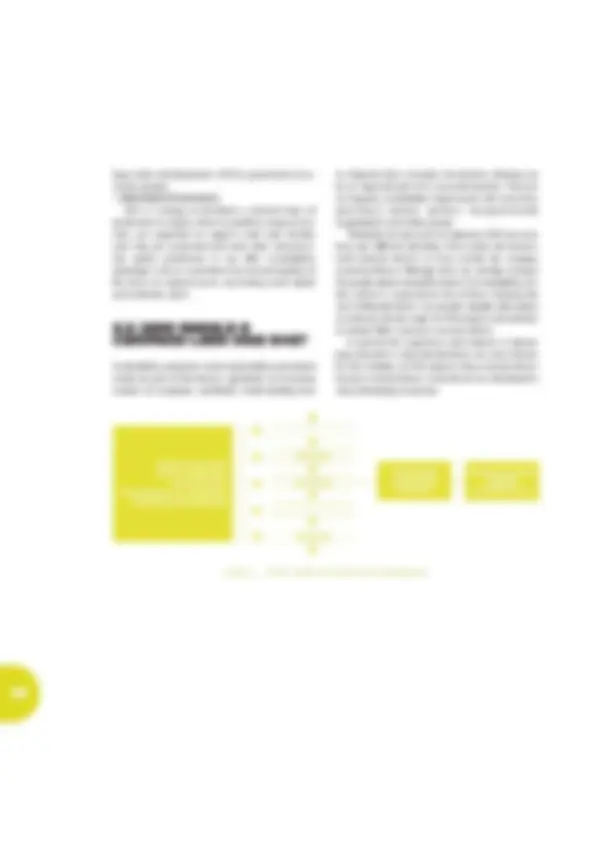
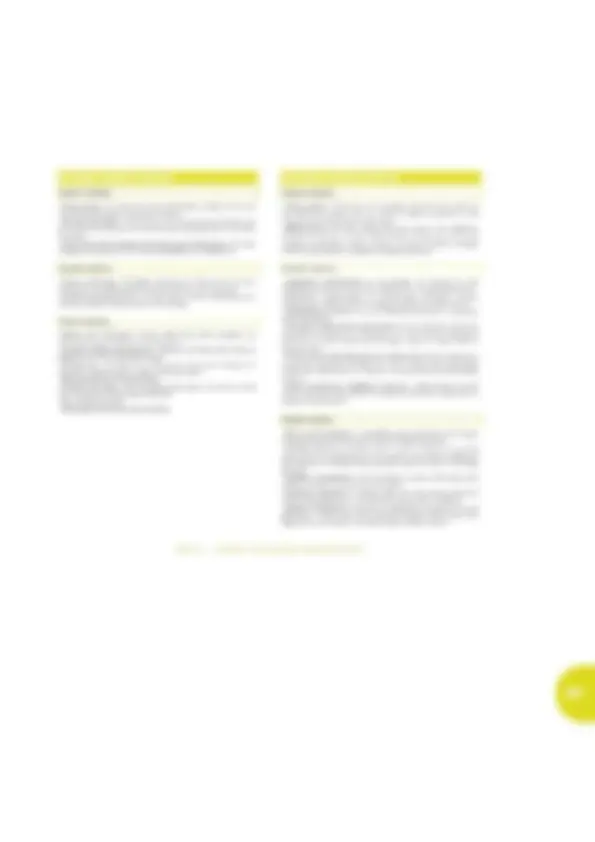

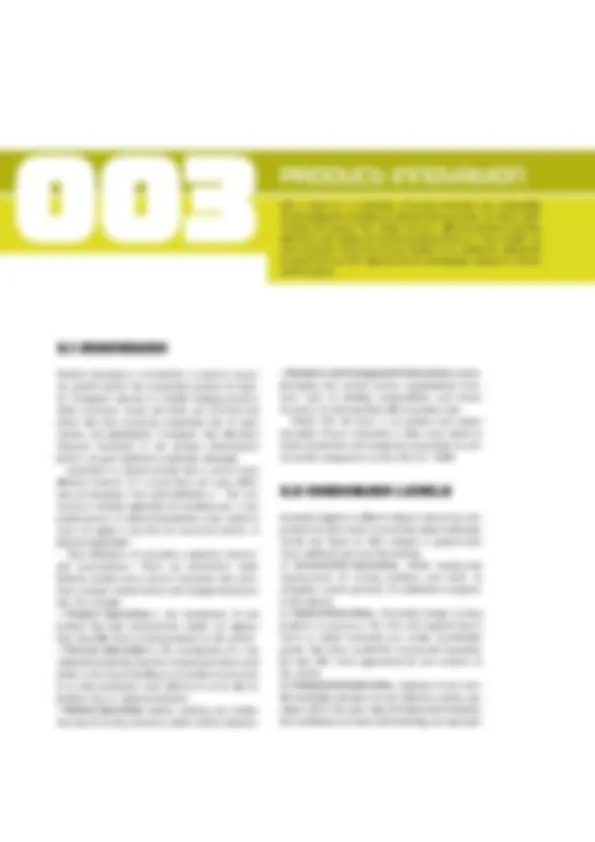
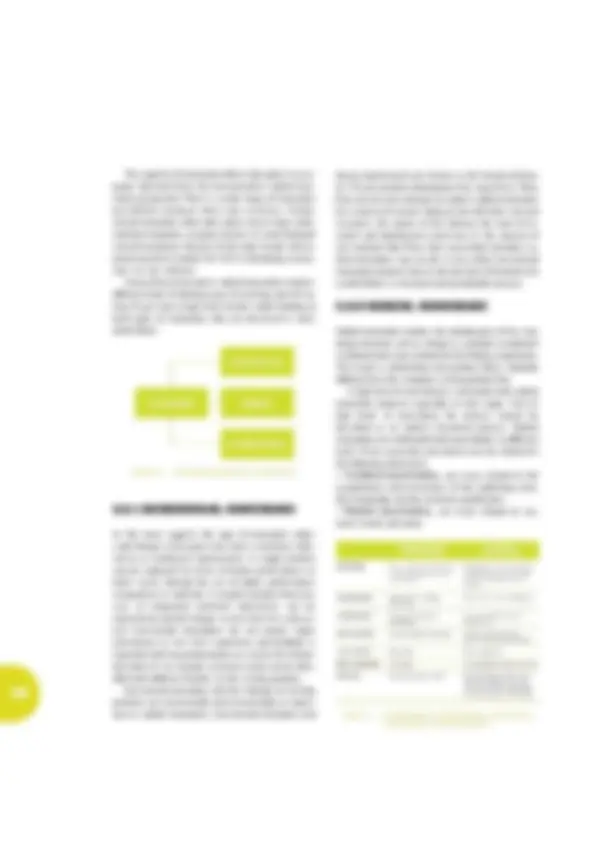
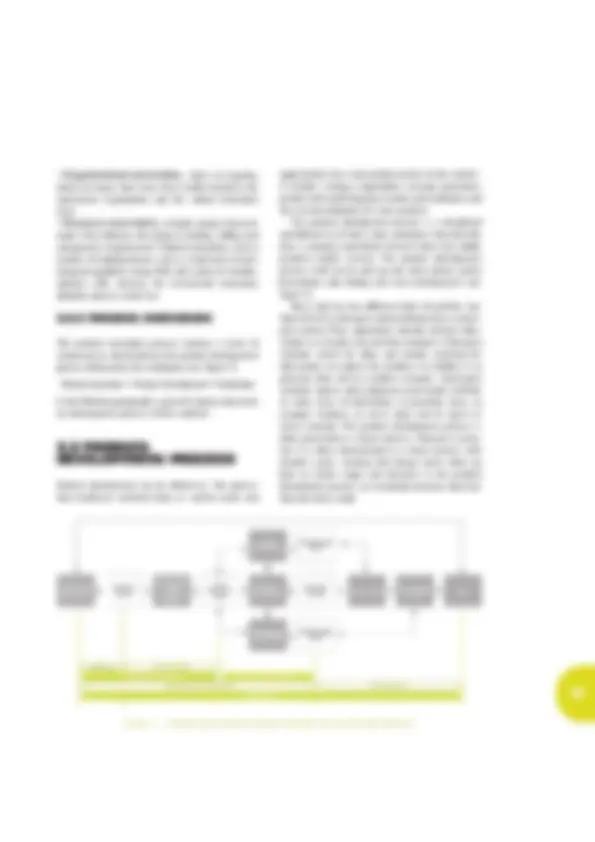
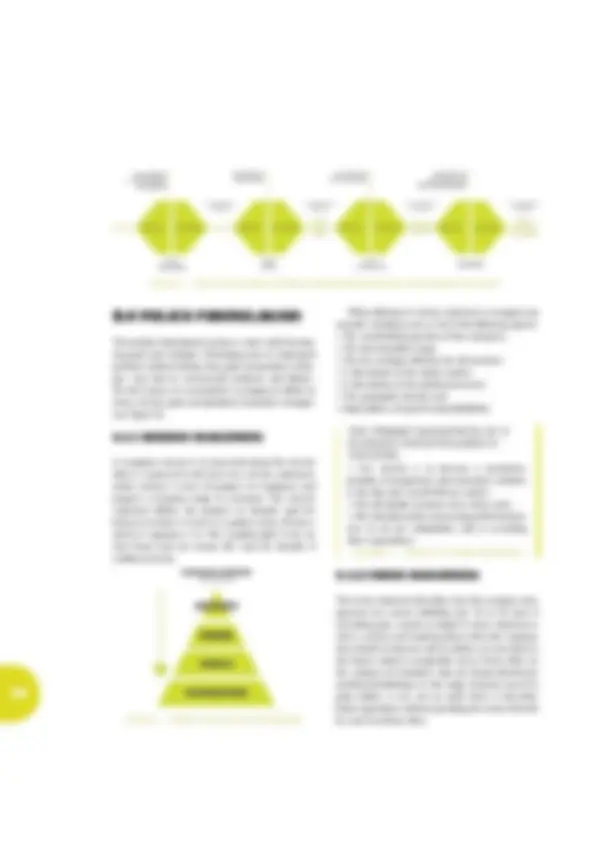
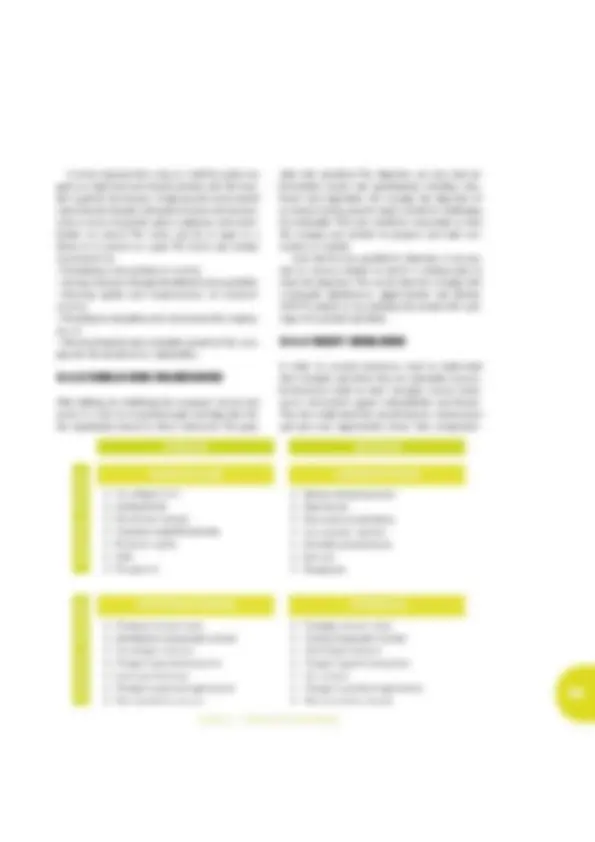
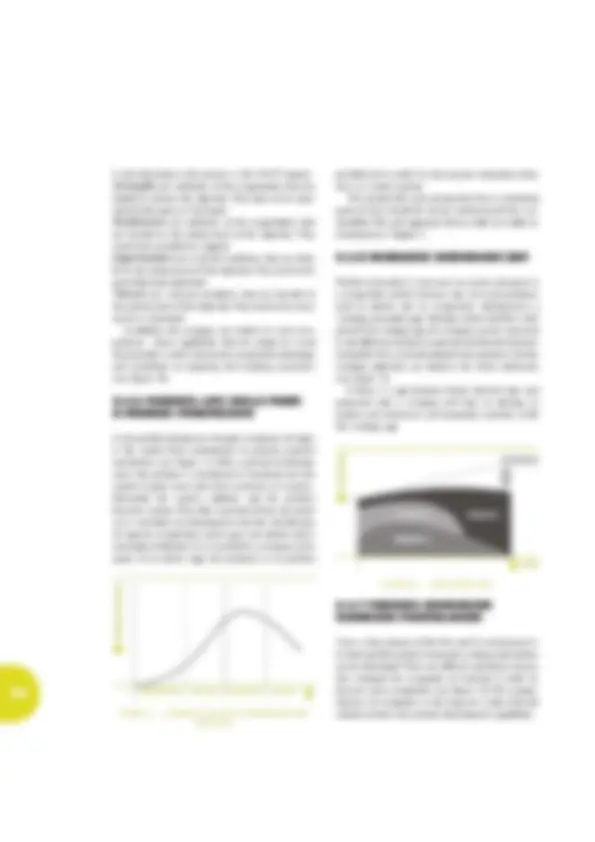
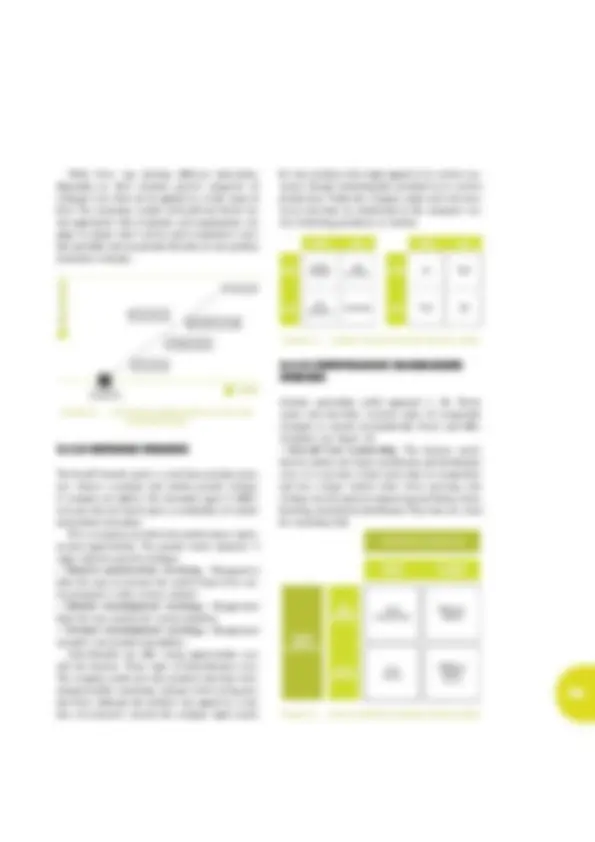
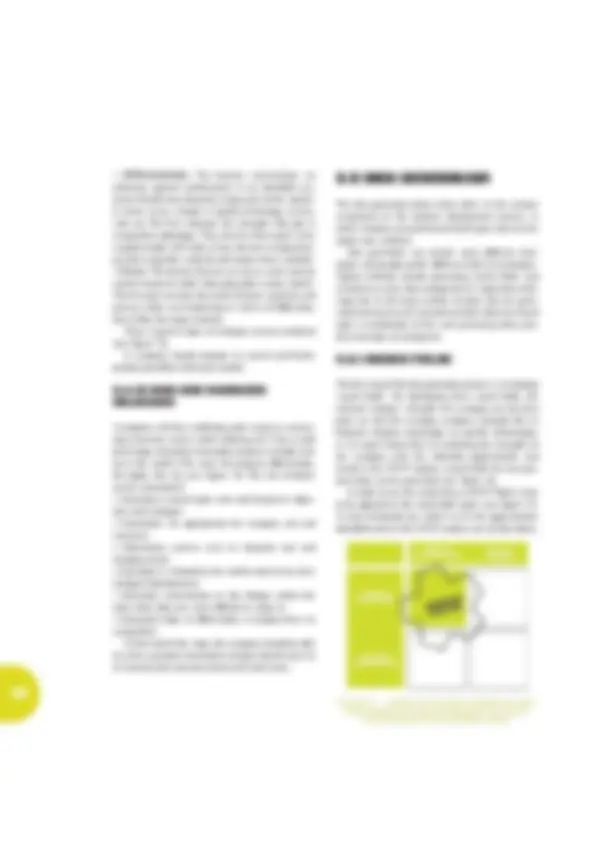
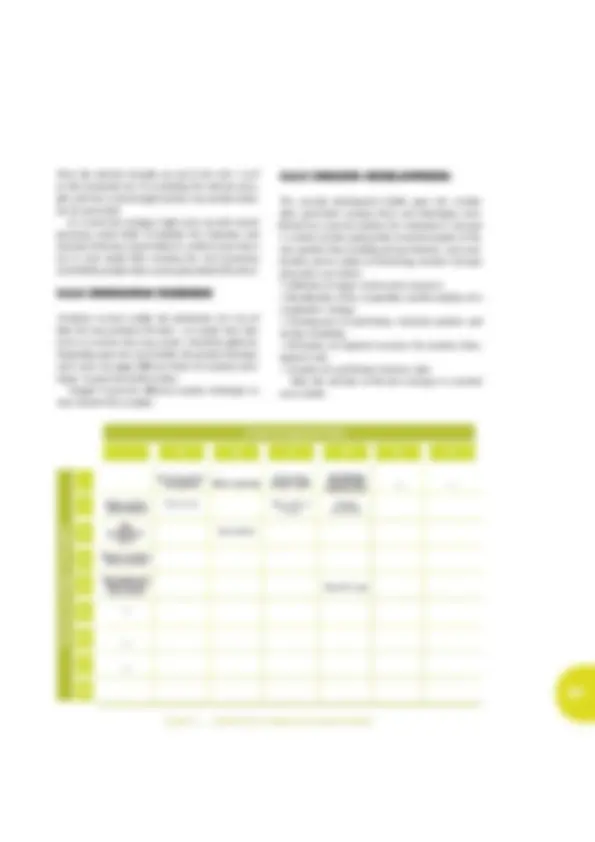
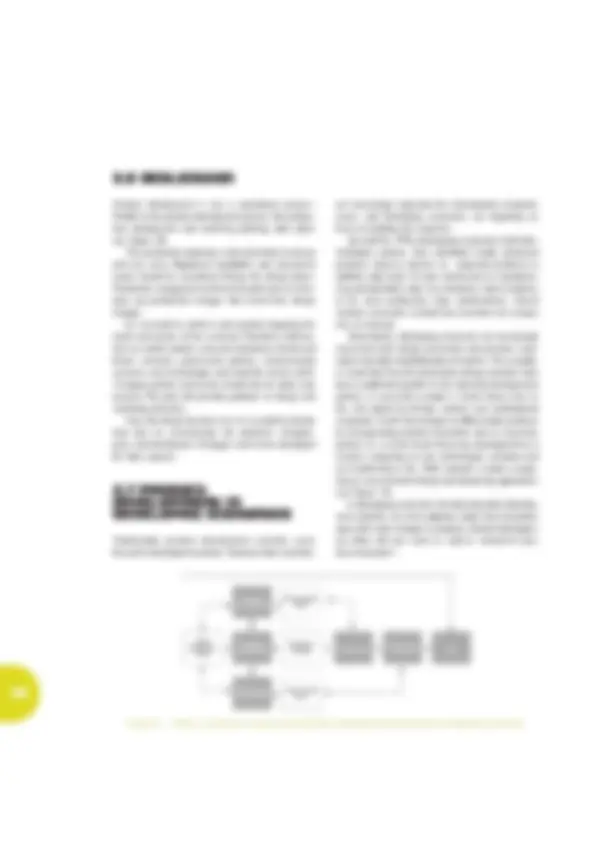
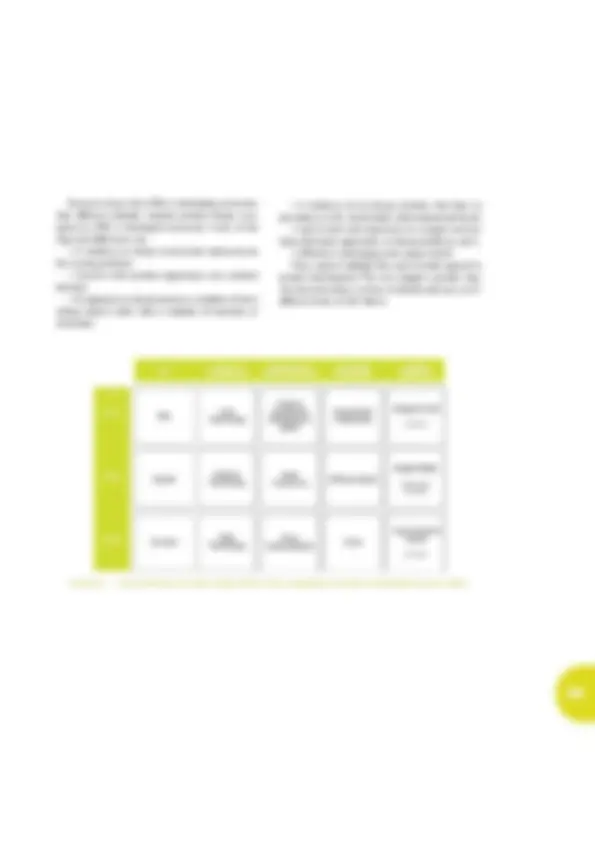





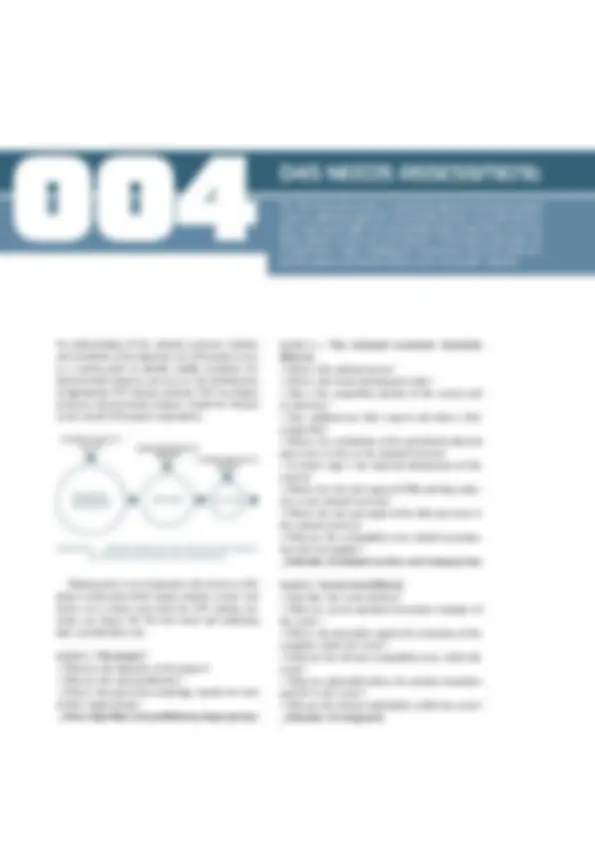
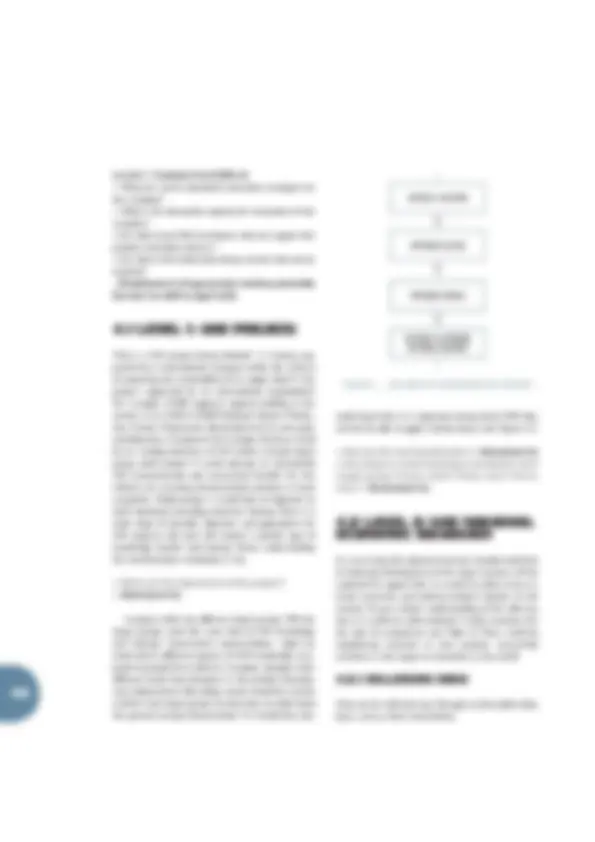

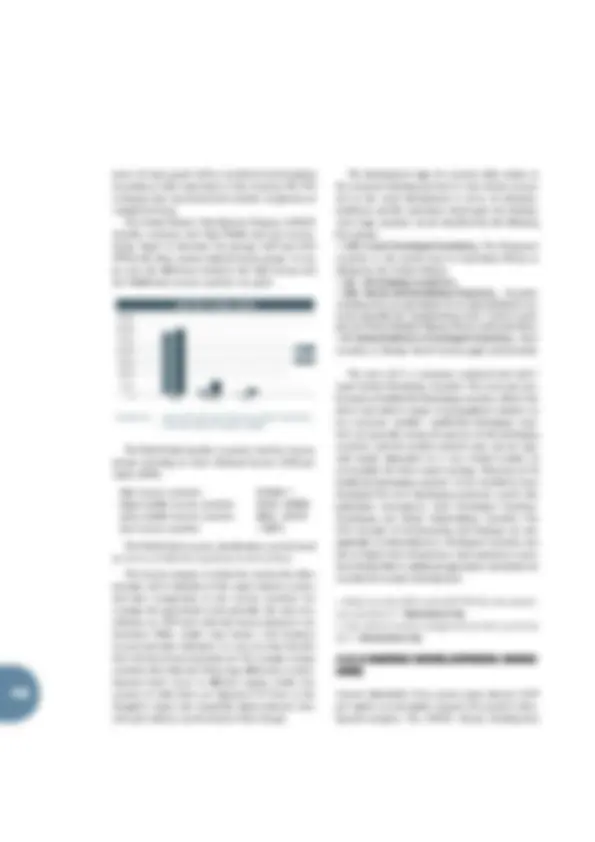
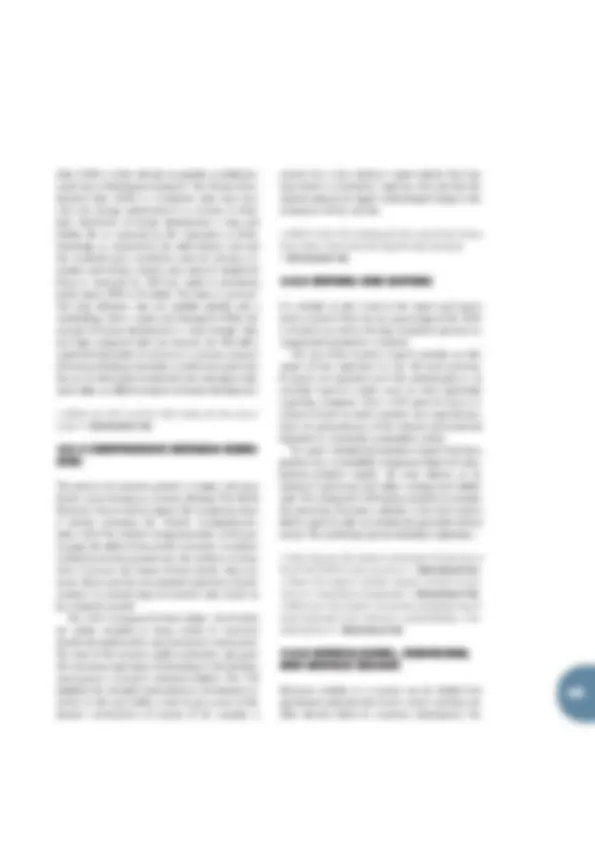
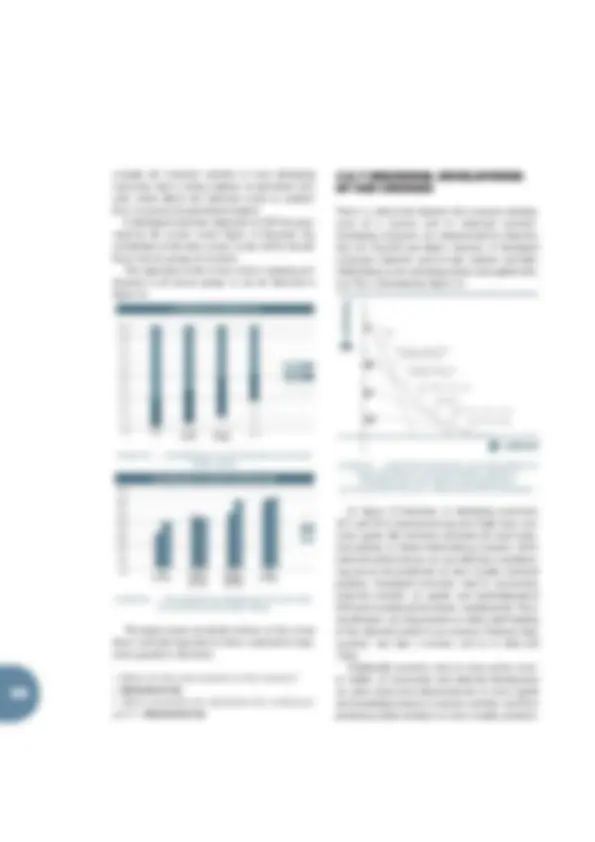
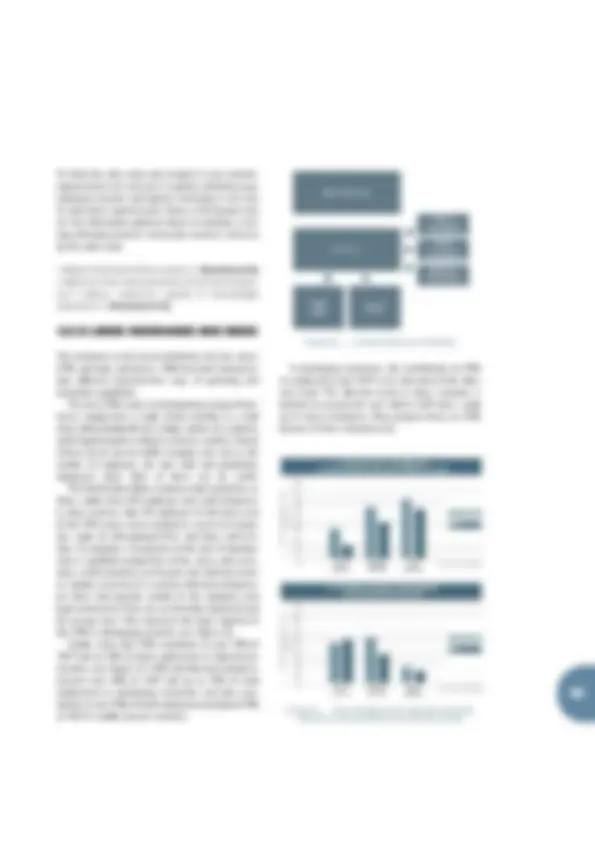
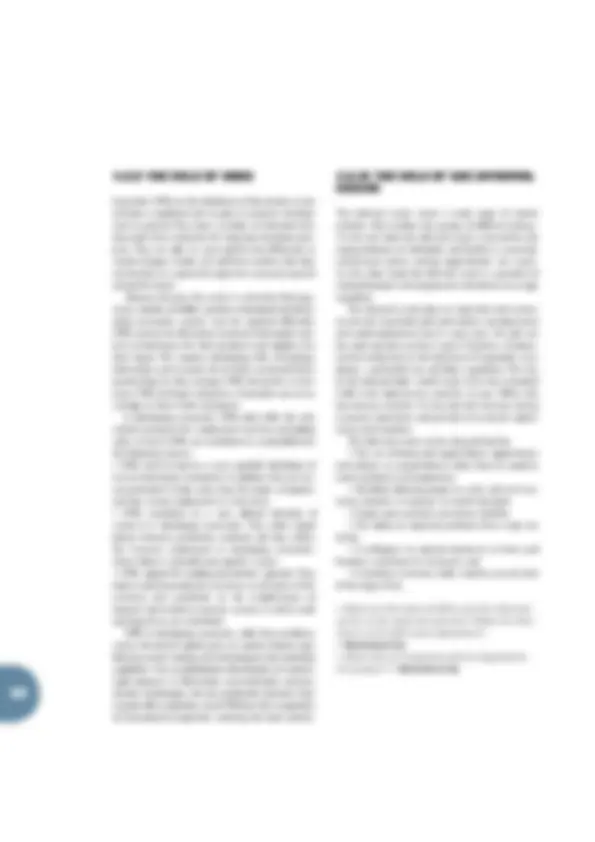
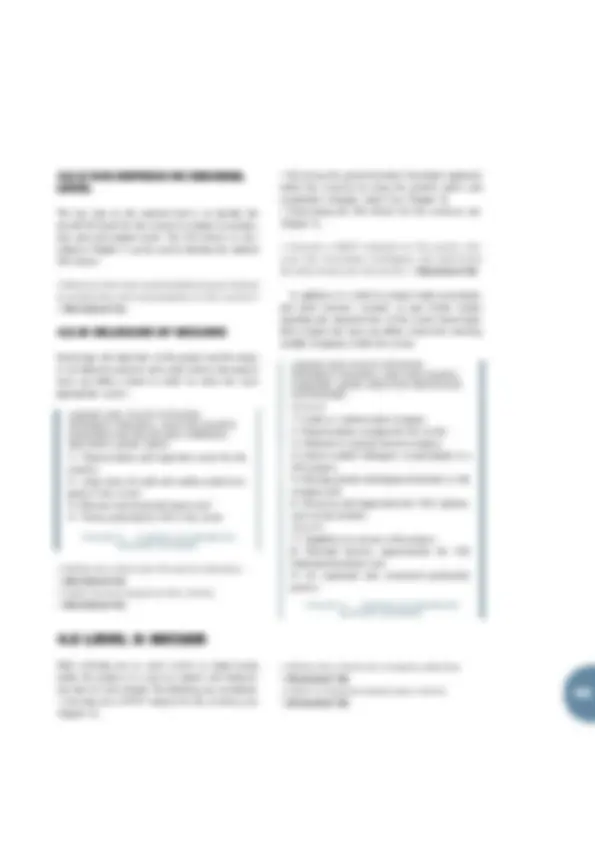
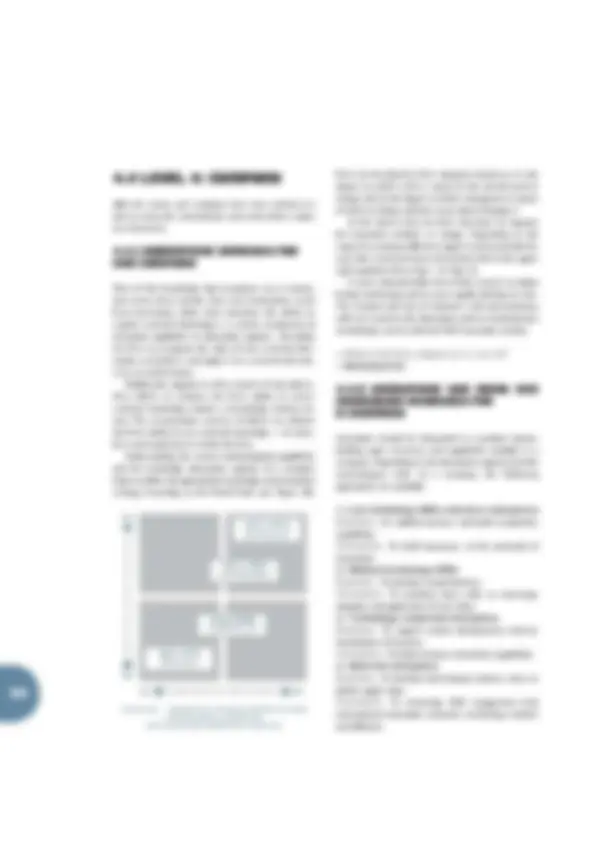
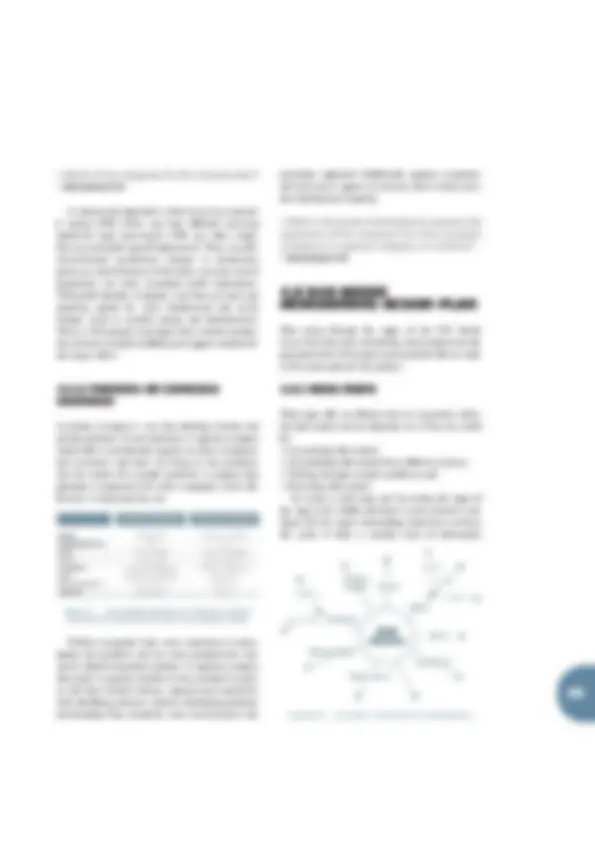



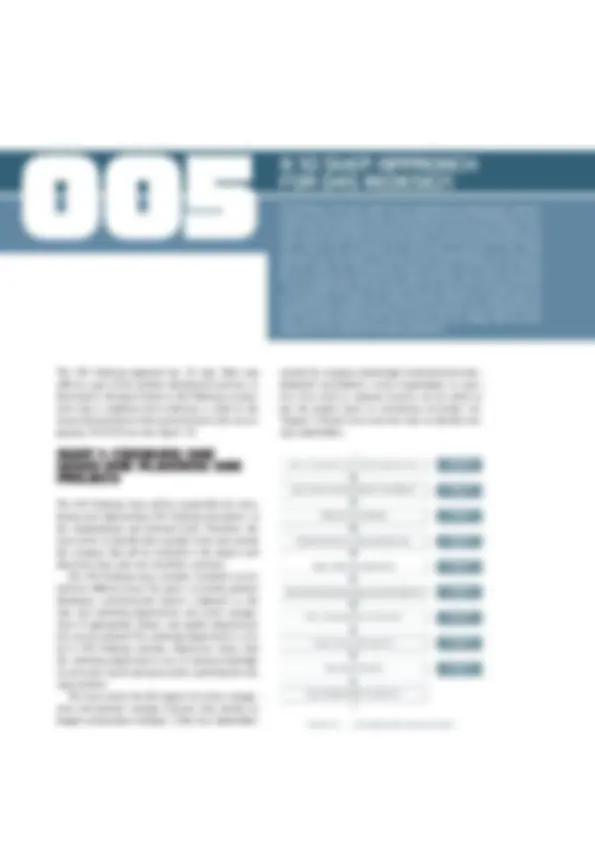
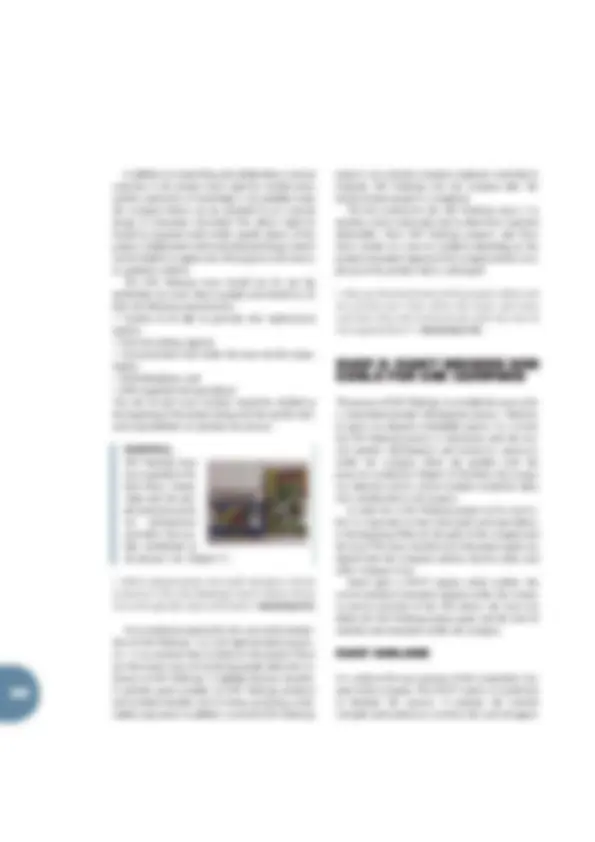
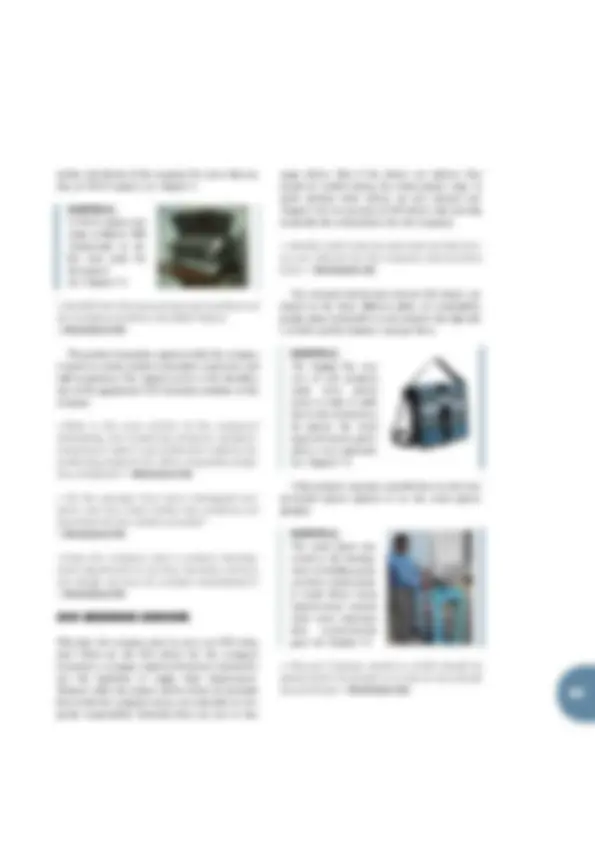
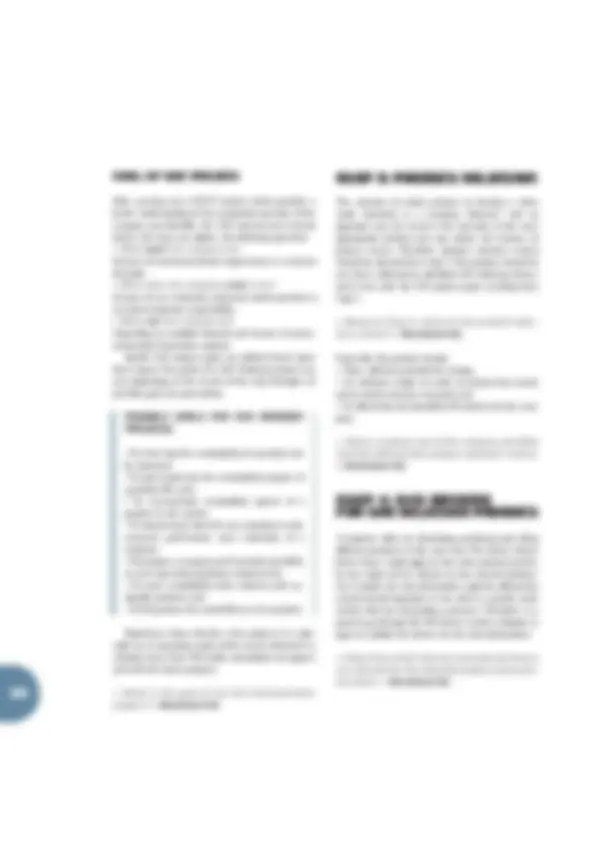
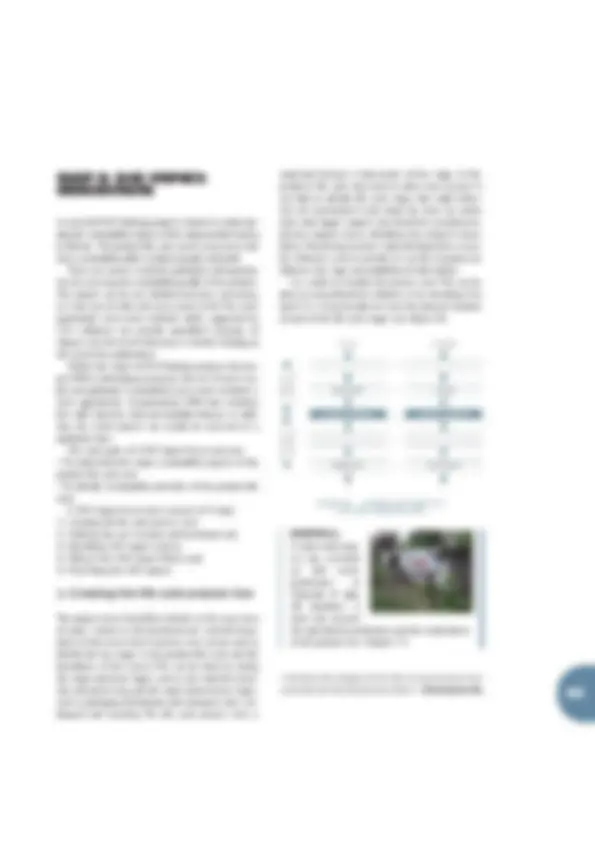
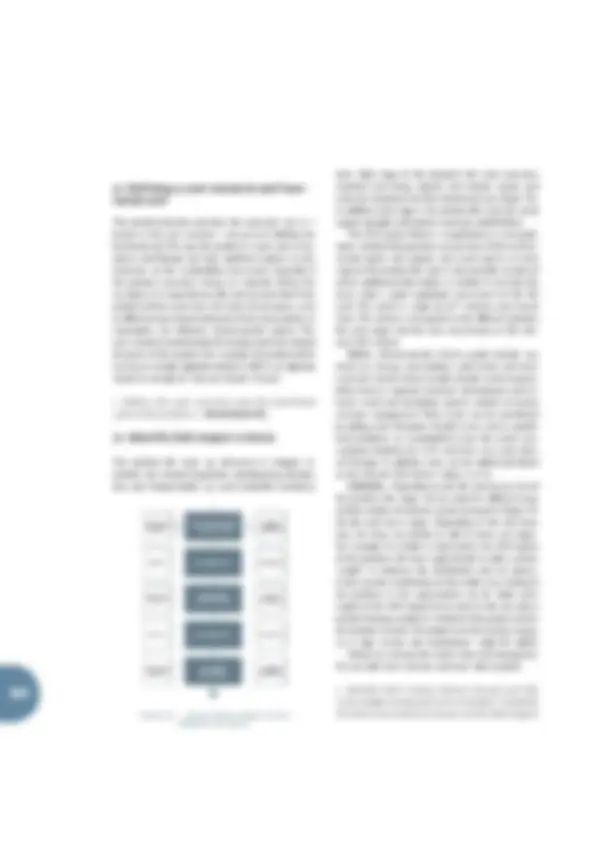
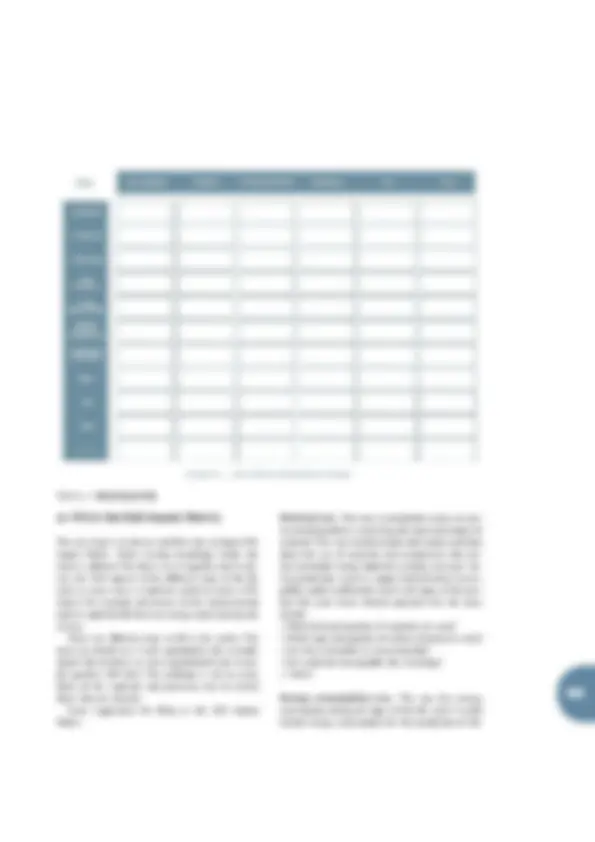
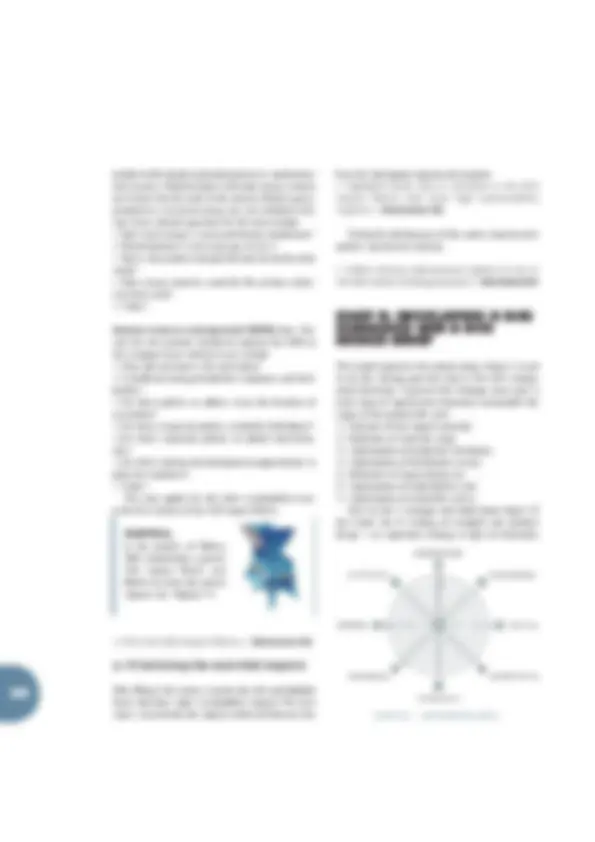
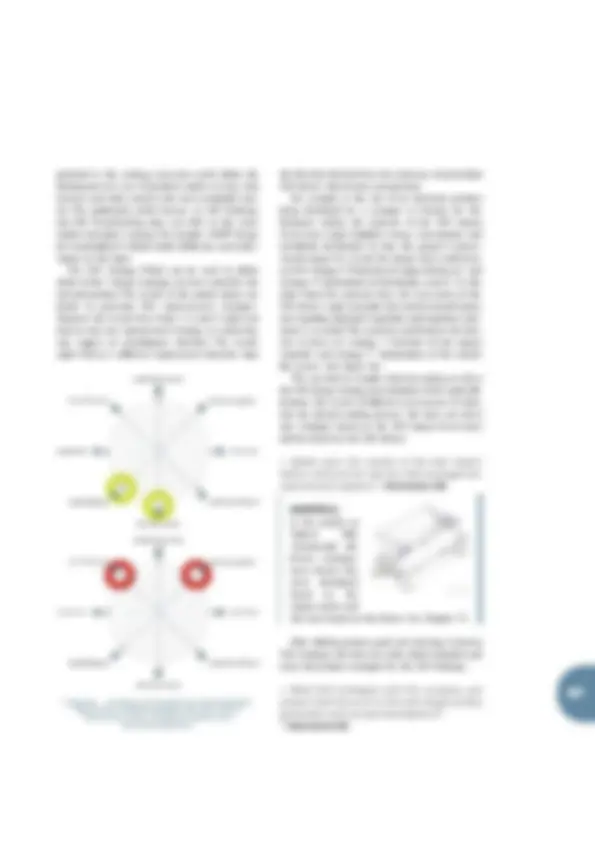
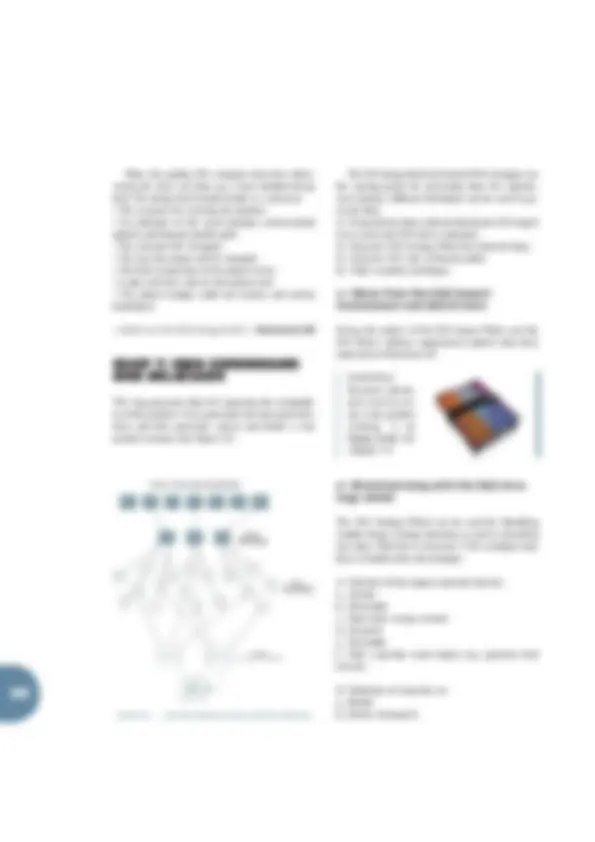
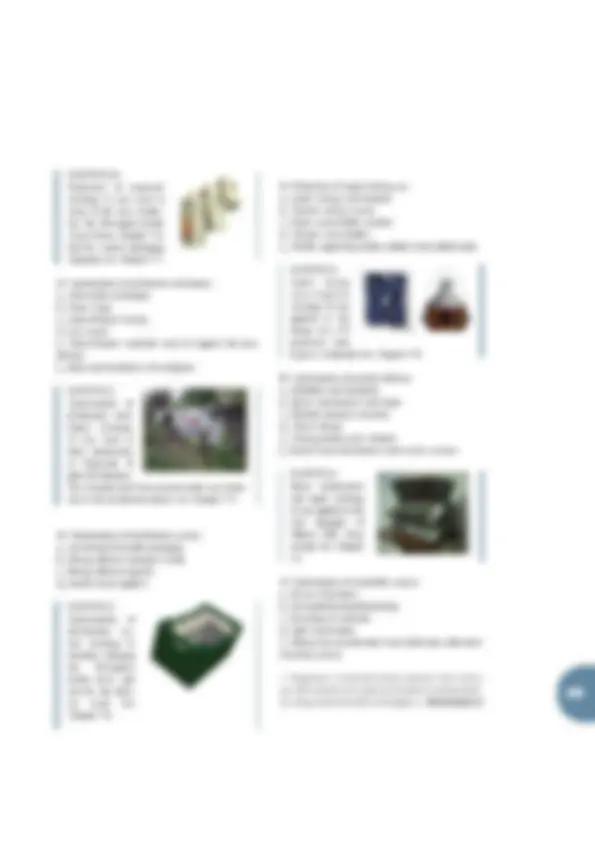
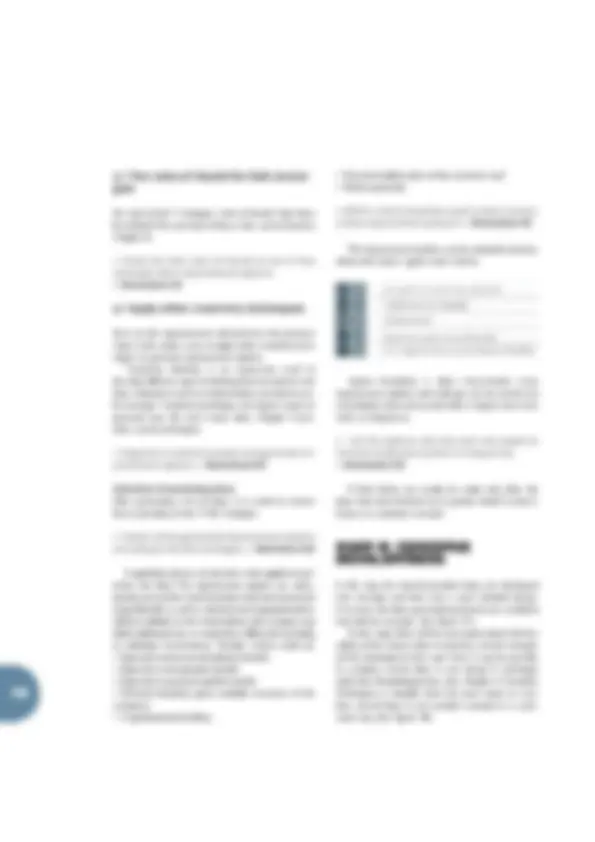
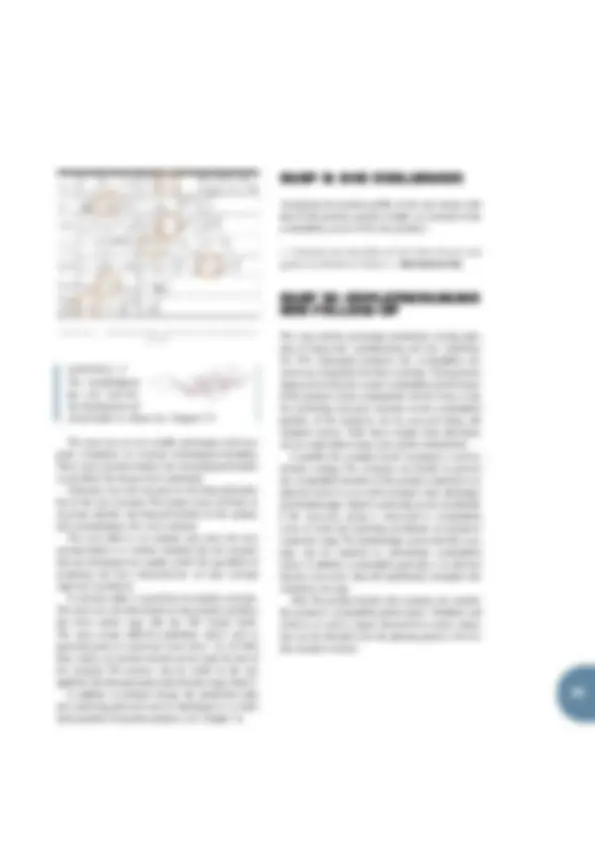

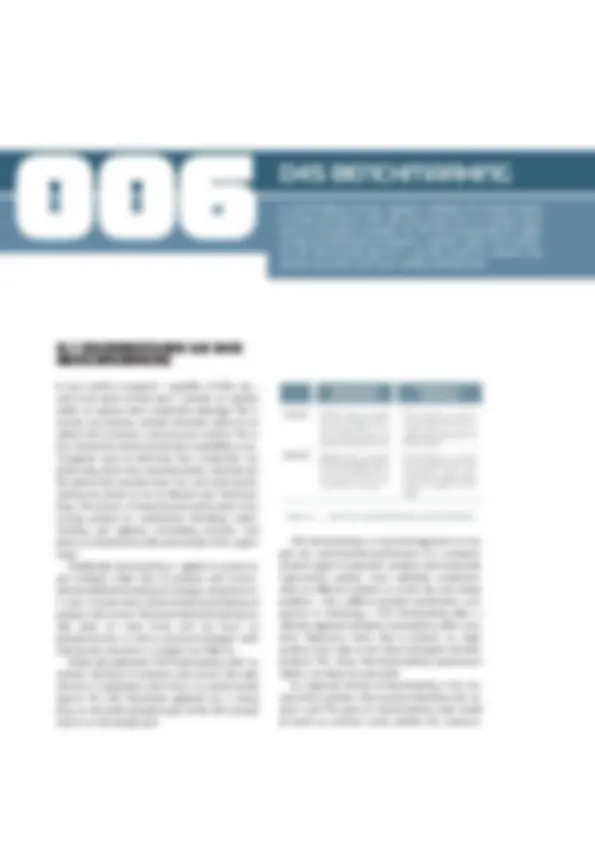

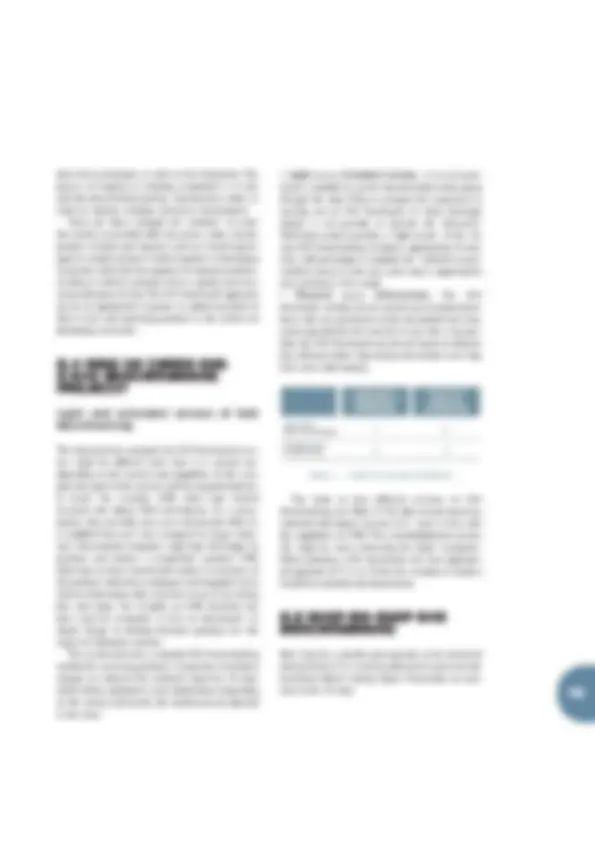
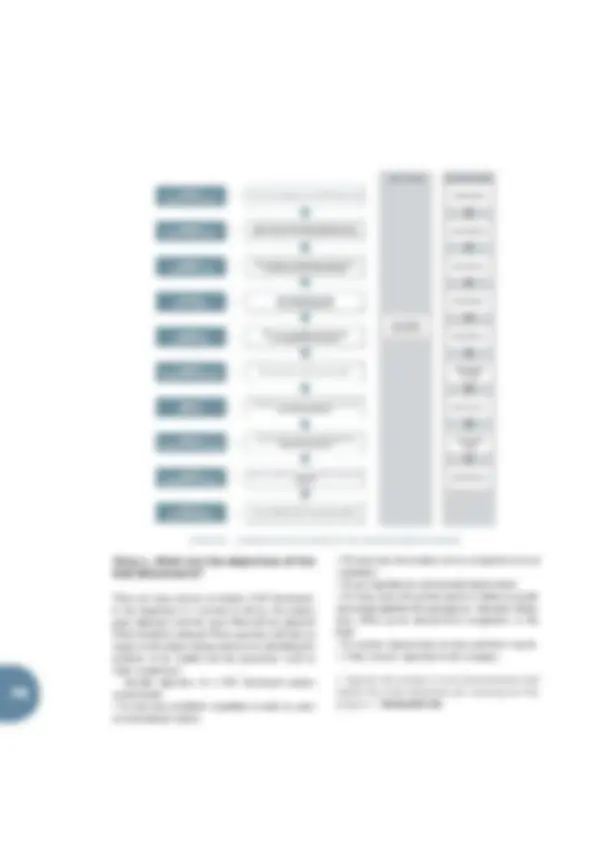
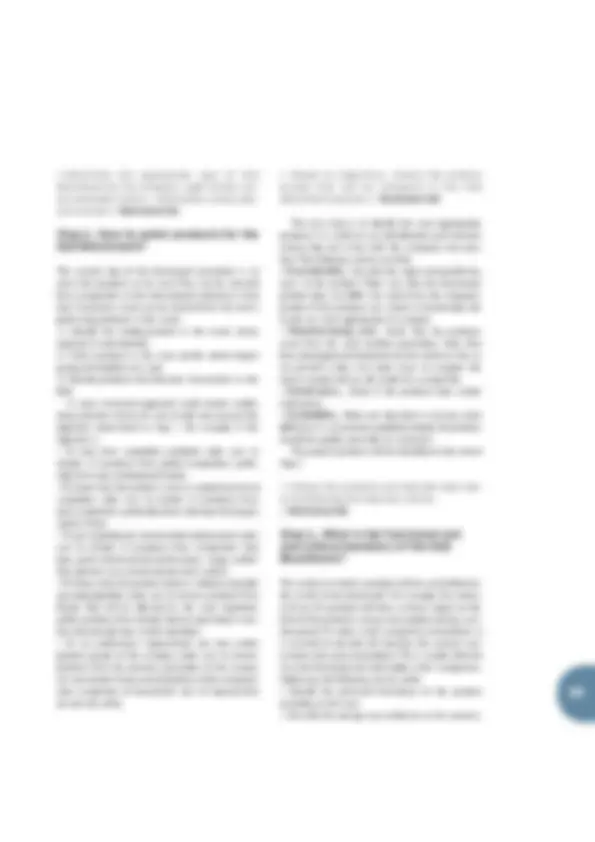
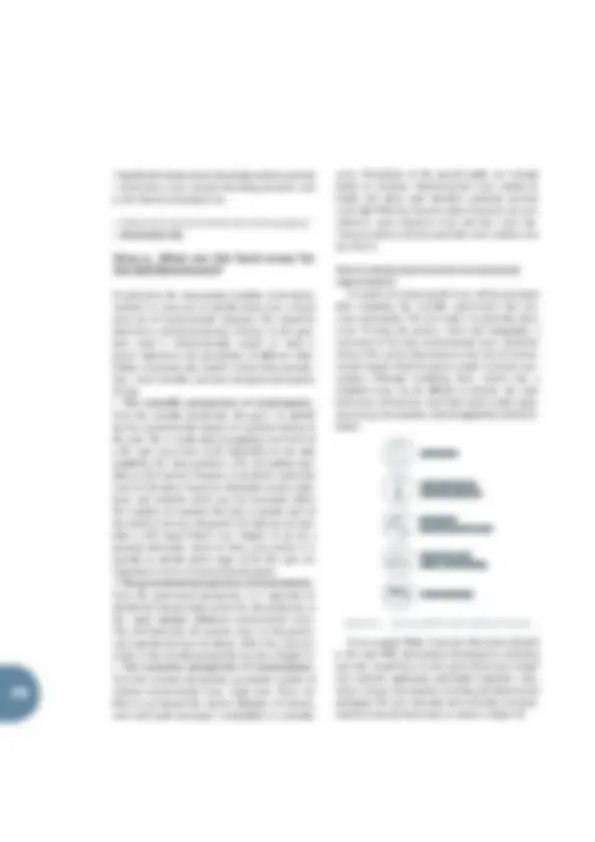
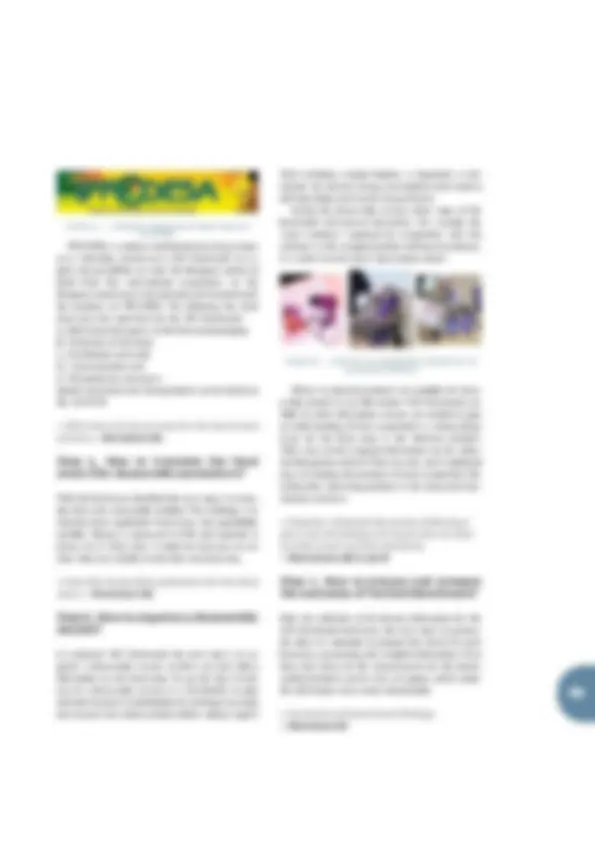
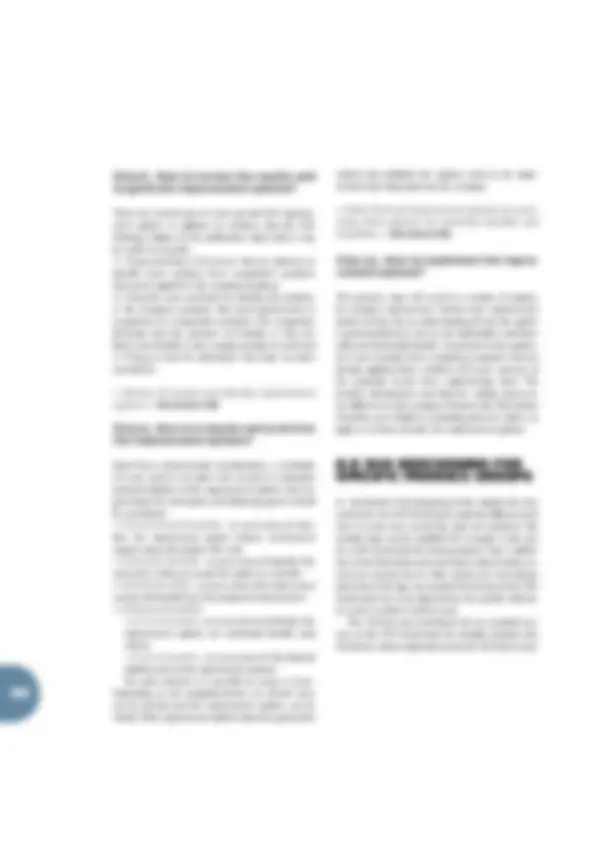
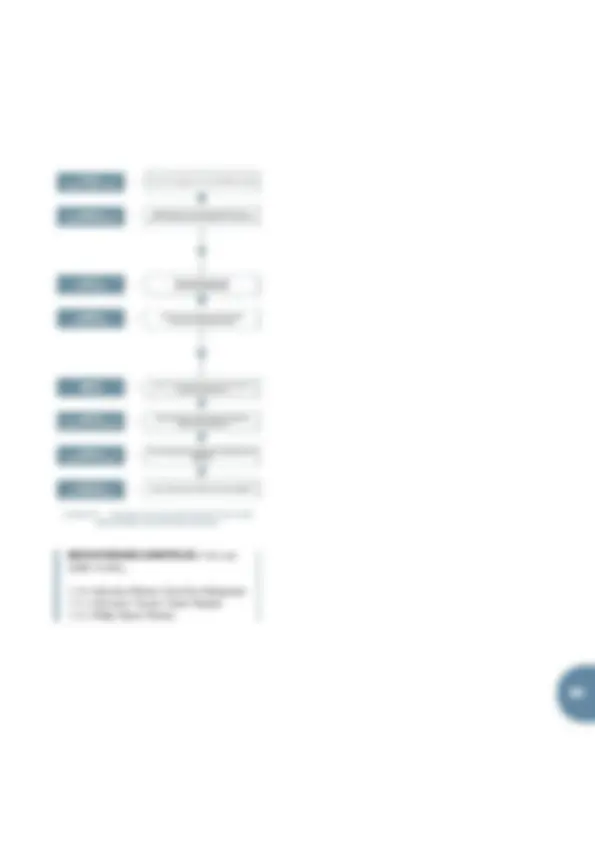





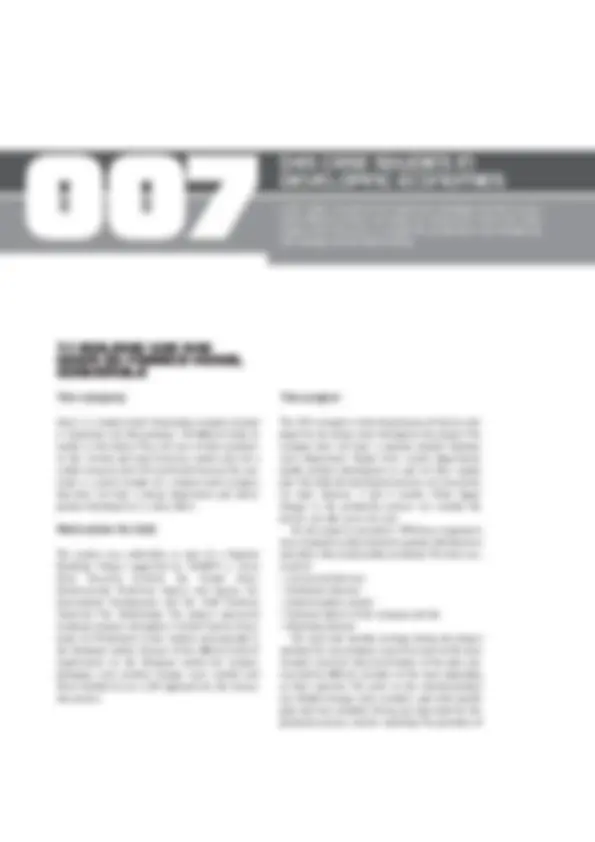
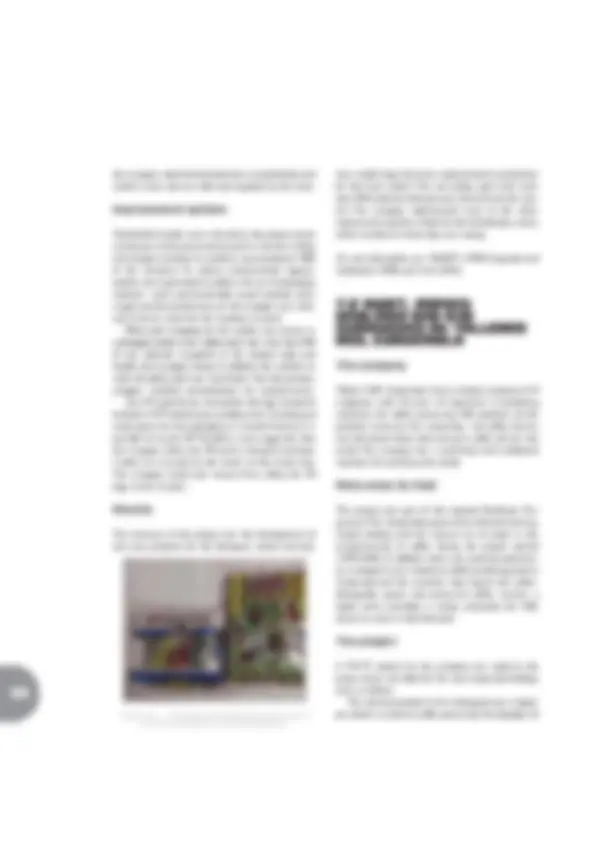
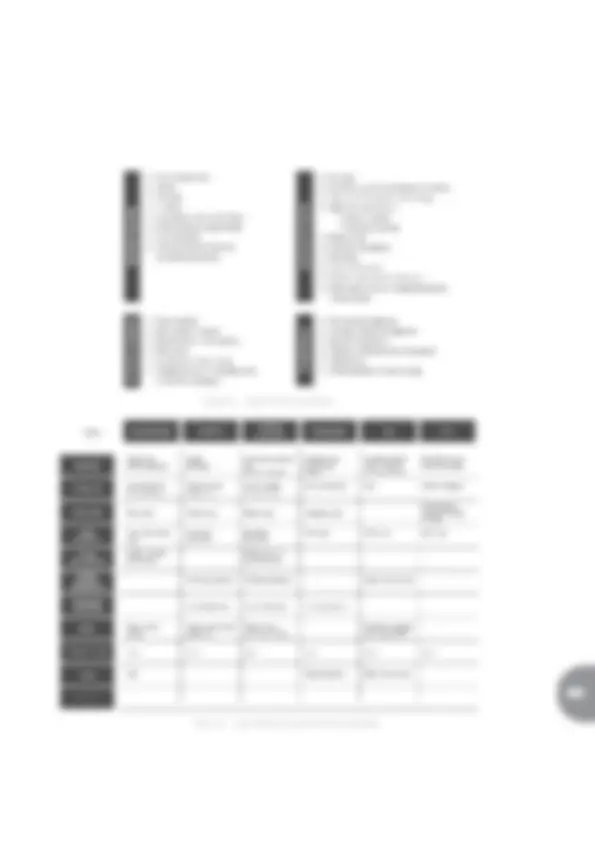
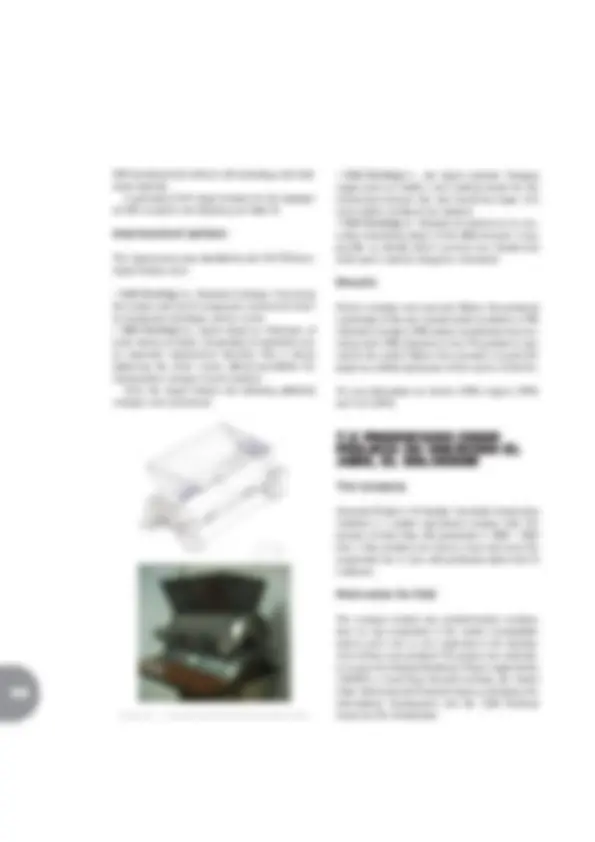
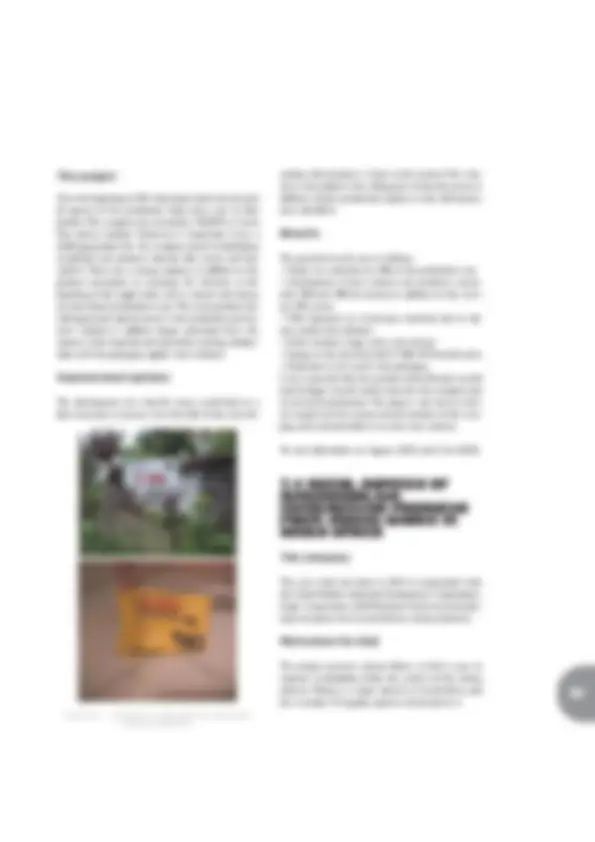
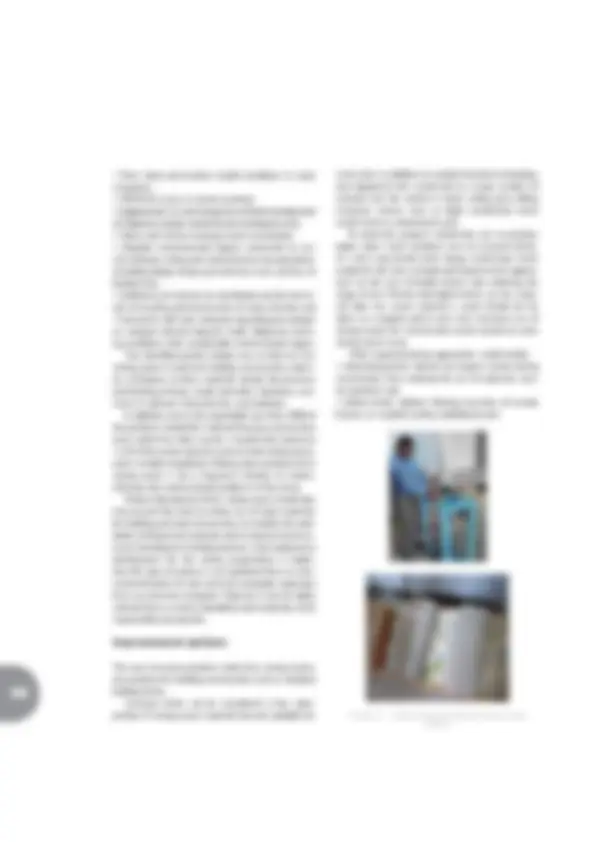
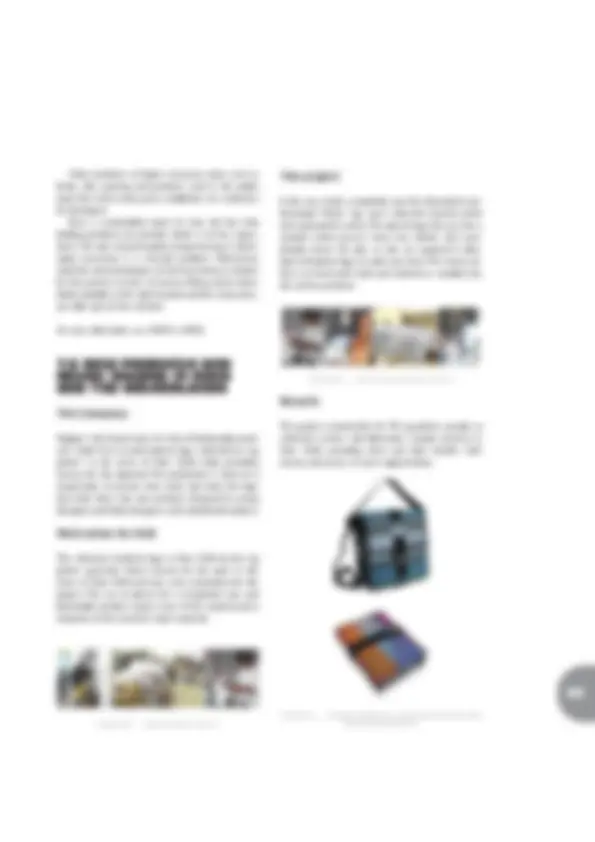
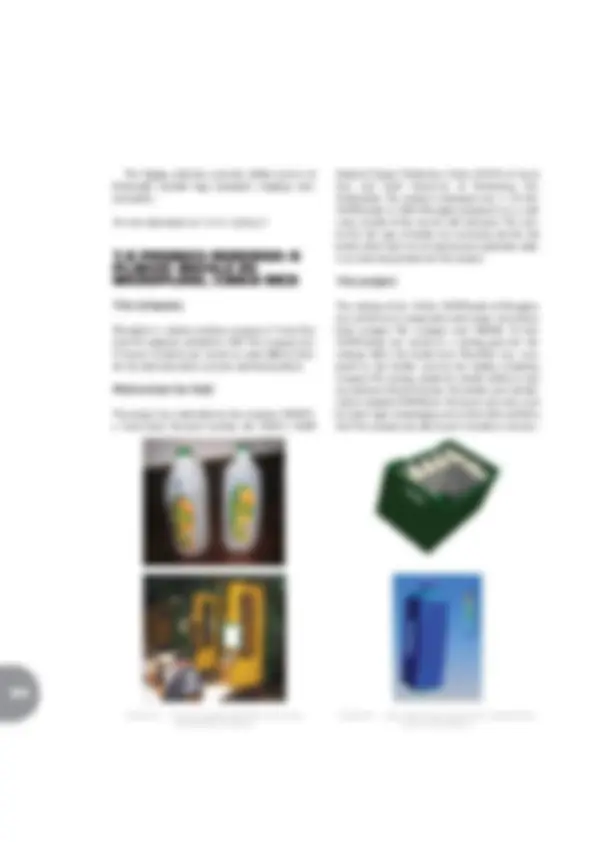
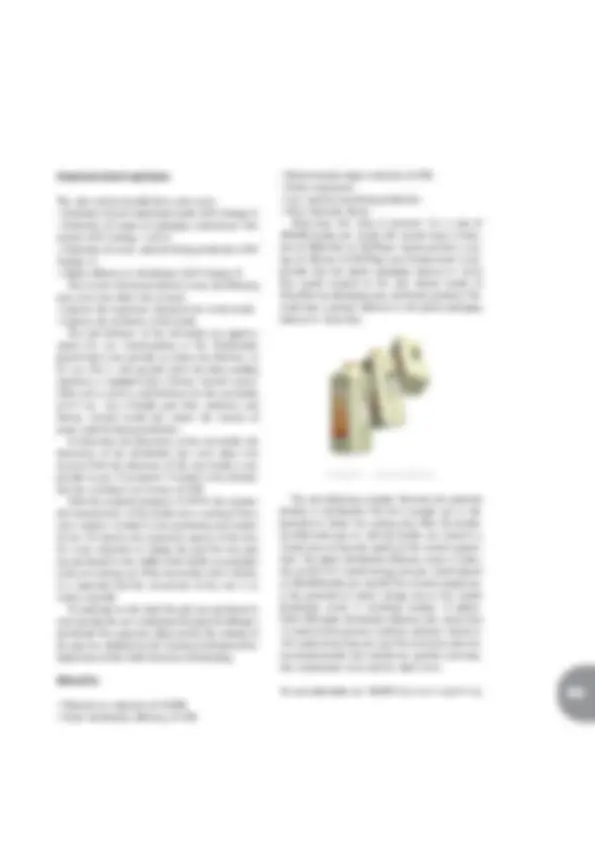
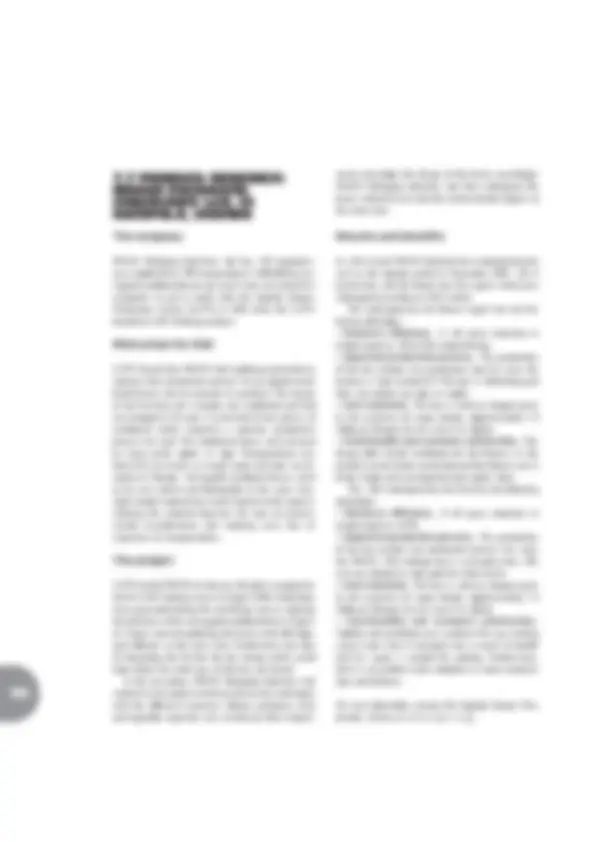
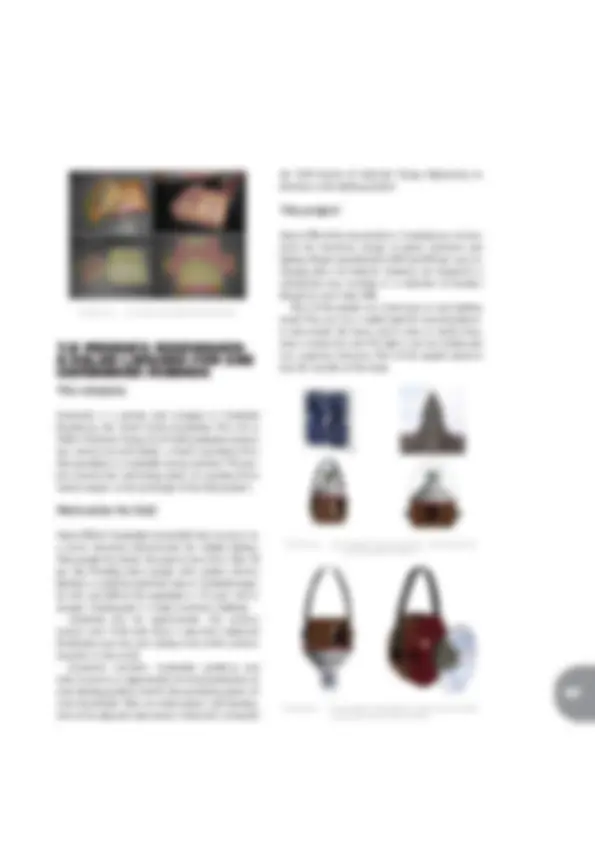
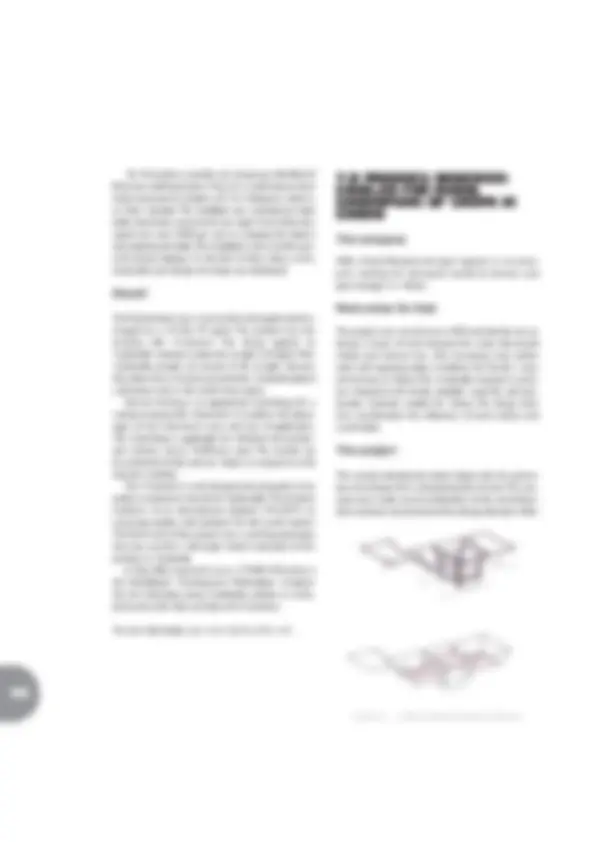
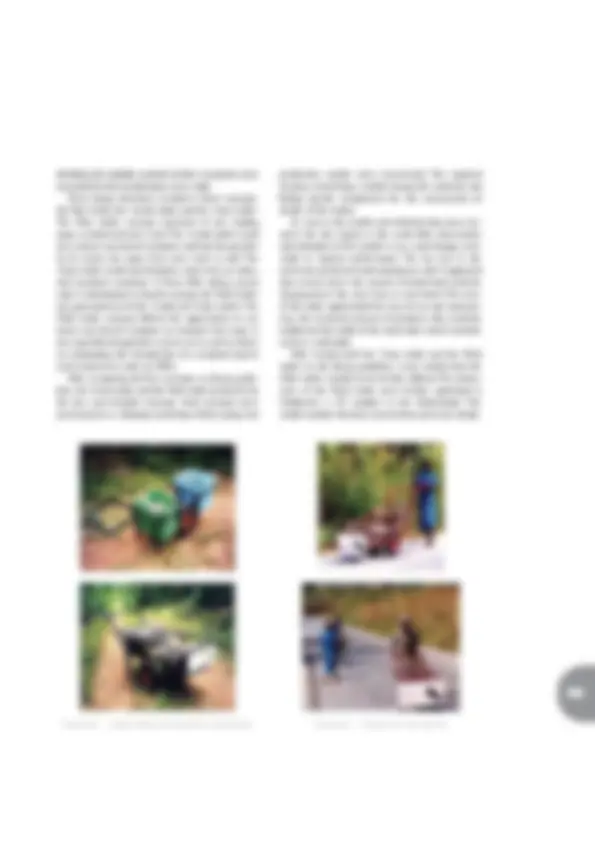


Study with the several resources on Docsity

Earn points by helping other students or get them with a premium plan


Prepare for your exams
Study with the several resources on Docsity

Earn points to download
Earn points by helping other students or get them with a premium plan
Community
Ask the community for help and clear up your study doubts
Discover the best universities in your country according to Docsity users
Free resources
Download our free guides on studying techniques, anxiety management strategies, and thesis advice from Docsity tutors
The role of sustainability in product innovation, especially in developing economies. It discusses the importance of product innovation for companies to compete in the global market and reduce environmental impacts. The document also introduces the concept of D4S (Design for Sustainability) and provides insights into the product development process. It is useful for professionals and companies interested in sustainable product design and innovation.
What you will learn
Typology: Lecture notes
1 / 130

This page cannot be seen from the preview
Don't miss anything!





























































































Acknowledgements
Ms. Garrette Clark, UNEP DTIE, France
Dr. M.R.M. Crul and Mr. J.C. Diehl Delft University of Technology,The Netherlands Faculty of Industrial Design Engineering
Mr. Smail Al-Hilali, MCPC, Morocco Prof. Dr. Han Brezet, Delft University of Technology, The Netherlands Prof. Dr.Tijani Bounahmidi, LASPI, Morocco Mr. Lelisa Daba, NCPC, Ethiopia Mr. Bas de Leeuw, UNEP DTIE, France Prof. Dr. Patrik Eagan, University of Wisconsin-Madison, United States of America Mr. Juan Carlos Espinosa, Universidad Los Andes, Colombia Mr. Leonardo Guiruta, MNCPC, Mozambique Mr. Jens Hönerhoff, CEGESTI, Costa Rica Mr. Evert Kok, UNIDO, Austria Mr. Samantha Kumarasena, NCPC, Sri Lanka Mr. Nguyen Hong Long, NCPC,Vietnam Ms. Sophie Loran, UNEP DTIE, France Dr. Diego Masera, UNEP Regional Office for Latin America and the Carribbean, Mexico Dr. Desta Mebratu, UNEP Regional Office for Africa, Kenya Mr. Zhao Ming,Tsinghua University Beijing, China Mr. Sergio Musmanni, CNPML, Costa Rica Dr. Kasimoni Patrick Mwesigye, UCPC, Uganda Ms. Maria Amalia Porta, CGPML, Guatemala Mr. Peter Repinski, UNEP Regional Office of North America, United States of America Mr. Alex Saer Saker, ODES, Colombia Dr. Nurelegne Tefera, Addis Abbaba University, Ethiopia Mr. B.S. Samarasiri, Moratuwa University, Sri Lanka Prof. Dr. John Turyagyanda, Makerere University, Uganda Dr. Sonia Valdivia, UNEP DTIE, France
Ms. Ana Mestre and Ms. Graça Campelo, SUSDESIGN, Portugal
Mrs. Carmen van der Vecht,The Netherlands and SUSDESIGN Portugal
InWEnt - Capacity Building International, Germany
It is clear that current patterns of consumption and production are unsustainable. The accelerating processes of globalization and trade liberalization, supported by advances in information technologies, have fundamentally changed the landscape of the private sector in all countries -developed and developing- providing new oppor- tunities and challenges. Companies, large and small, have made impressive efforts to address sustainability issues with a triple bottom line focus. Design for Sustainability (D4S) has the potential to improve efficiencies, product quality and market oppor- tunities (local and export) and at the same time improve environmental performance. In many developed countries, because of a high level of awareness, D4S efforts are linked to the broader concepts of product-service mixes, systems innovation and other life cycle-based efforts. In developing economies, due to limited awareness, more immediate technical support is needed to introduce the D4S concept. However, successful implementation of D4S requires working in partnership. This publication is an example of one such effort. The growing attention paid to D4S is a natural outcome of UNEP’s work on cleaner production, eco-efficient industrial systems and life cycle management. It is the next step in a progressive widening of the horizon of pollution prevention; a widening which has gone from a limited focus on production processes (cleaner production), to include products (ecodesign), product-systems (D4S incorporating transport logistics, end-of-life collection and component reuse or materials recy- cling) and systems innovation. Building upon the work carried out with the Dutch Delft University of Technology and other experts in ecodesign, UNEP published the ground breaking manual ‘Ecodesign:A Promising Approach to Sustainable Production and Consump- tion” in 1997. The concept of product re-design has since then spread as seen in the number of manuals and sector specific supporting materials now produced in many languages. As a result and based on experience gained, ecodesign has evolved through Design for Environment (DfE) to the broader concept of D4S – which encompasses issues such the social component of sustainability and the need to develop new ways to meet consumer needs in a less resource intensive way. D4S goes beyond how to make a ‘green’ product – and now strives to meet con- sumer needs through sustainability in a systematic and systemic way. UNEP’s activities in the D4S area include the development of an updated global manual for designers and other professionals working in the area of product develop- ment in industry and elsewhere to provide support and guidance on the evolved concept of D4S. It is useful to those new to ecodesign as well as those interes- ted in breakthrough innovation for sustainability. This practical approach for developing economies is based on the larger Design for Sustainability: A Global Guide but focuses on the specific needs of small- and medium-sized companies in developing economies. With all the progress in D4S, few targeted efforts have been made to introduce the benefits of D4S to business and business intermediaries in developing economies. Surveys of centres of excel- lence confirm that D4S is a service that they could sell to industry. Increasing focus of supply chain management efforts on resource use improvements reinforces this need. Whereas, in developed countries end-of-life regulations provide incentives for com-
Foreword
D4S Graphic Design Concept
The D4S graphic design of this publication is based on the sustainability concept and its considera- tion of the three elements of PEOPLE, PROFIT AND PLANET. The graphic design is comprised of 3 subjects and 3 colours to illustrate these elements: PEOPLE are illustrated by the expressions of Human beings from different cultures and races. PLANET is represented by different natural elements of the planet such as water, rocks, trees, sand and plants. PROFIT is illustrated by views of the building environment taken from examples of highly deve- loped sites from throughout the world. The graphic design was developed by SUSDESIGN, an entity devoted to the promotion of Design for Sustainability and is illustrated with photographs of Carmen van der Vecht and SUSDESIGN.
Lgo Sto Antoninho, 3 1200 406 Lisboa Portugal Tel l Fax: + 351 213 422 200 info@susdesign.org www.susdesign.org Photos by: Carmen van der Vecht carmen-v@dds.nl www.streetarts.info and SUSDESIGN
1> Introduction
Sustainability (D4S)............................................ 1.2 _ To whom is this publication addressed?....................................... 1.3 _ How is the publication organized?........................................
2> Design for Sustainability (D4S)
2.1 _ Products and Sustainability................................. 2.2 _ Products and environmental aspects – Planet implications............................................ 2.3 _ Life cycle and improvement factor thinking.............................. 2.4 _ Products and social aspects – People implications............................................ 2.5 _ Why should a company look into D4S?..................................................
3> Product Innovation
3.1_ Innovation......................................................... 3.2 _ Innovation levels................................................ 3.3 _ Product development process........................... 3.4 _ Policy formulation............................................. 3.5 _ Idea generation................................................. 3.6 _ Realization........................................................ 3.7 _ Product development in developing economies.........................................................
What is D4S
and why do it?
Part I
15
16
17
21
23
23
25
26
29 29 31 32 36 38
38
7> D4S Case studies in Developing Economies
7.1_ Building the D4S team at Fabrica Venus, Guatemala.............................. 7.2_ SWOT, Impact analysis and D4S Strategies at Talleres REA, Guatemala............ 7.3_ Production Chain project at Hacienda El Jobo, El Salvador......................... 7.4_ Social aspects of sustainability: construction products from mining waste in South Africa......................... 7.5_ New products and reuse: Ragbag in India and The Netherlands............ 7.6_ Product redesign: a plastic bottle at Microplast, Costa Rica.............................. 7.7_ Product redesign: MAKSS Packaging Industries Ltd. in Kampala, Uganda................ 7.8_ Product innovation: a solar lantern for the Cambodian market........................... 7.9_ Product redesign: tailer for rural transport of crops in Ghana......................................... 7.10_ Benchmark for refrigerator of Waiman Industries, Costa Rica................. 7.11_ Benchmark: Intermech cassava grater,Tanzania................................ 7.12_ Benchmark: Philips computer monitor...................................... 7.13_ An example of an internationally supported D4S programme: InWEnt...........
8> D4S Rules of Thumb ..............
9> Creativity Techniques ..........
Further reading .....................................
Reference information
on D4S
Part III
87
88
90
91
93
94
96
97
98
100
101
103
104
107
113
121
Part I
What is D4s and why do it
medium-sized or large companies have at least one pro- duct innovation expert in their management team. In developing economies the importance of product innovation is rapidly increasing as well. In India, for example, product innovation has become an important discipline, especially after the Indian market opened to international competition. Small- and medium-sized industries (SMEs) will need to focus on product development as well. In addition to in-house product development expertise, this can be done by cooperating with sector organisations, or bringing in external experts from consultancies, univer- sities and other expertise centres.
Products and Sustainability Growing global concerns about environmental prob- lems such as climate change, pollution and biodiversity loss and about social problems related to poverty, health, working circumstances, safety and inequity, have fostered sustainability approaches for industry. In the international policy arena, as illustrated by the World Summit for Sustainable Development, governments, industry and civil society have adopted the term sus- tainable consumption and production. Improved product design which applies sustainability criteria - Design for Sustainability (D4S) - is one of the most useful instruments available to enterprises and
IInnttrroodduuccttiioonn
Welcome to the joint UNEP and Delft University of Technology publication on Design for Sustainability: a practical approach for developing economies! In this introduction, the relevance of D4S for developing economies is highlighted. Next, the target groups of this publication are defined, and the overall struc- ture of the publication is explained.
1.1 The relevance of Design for Sustainability (D4S)
Product Innovation Companies all over the world increasingly need to inno- vate their products and processes to: keep up with competitive pressure; increase productivity within the region or worldwide; defend or expand market share; and to create the ability to attract foreign investments. However, companies in developing economies can be left out of this cycle for a variety of economic and struc- tural reasons. Product innovation is becoming one of the key strate- gic options available to firms, supply chains and integrated industrial sectors in developing economies to compete better in today’s global market. Through advances in information, communication and infrastructure, local and international markets are becoming more competitive and challenging - obliging companies to adapt. The interest in product innovation has grown rapidly during the past decades. Industrialisation, open markets, higher (quality) requirements from customers and an increase in competitiveness between companies locally and globally have created a serious demand for a struc- tured process for product innovation within industry. Industries cannot survive in the long-run without product innovation as an integral part of the company manage- ment and product development processes. International industries have reacted to these developments by creating their own product innovation departments or by con- sulting with external product innovation experts.Many
core, is the development of a new global guide for designers and industry providing support and guidance on the evolved concept of D4S (Design for Sustainability: A Global Guide, UNEP 2006). It is use- ful to those new to ecodesign as well as those interes- ted in breakthrough innovation for sustainability. The guide is the result of the long-term cooperation of international D4S experts from the Netherlands, Sweden, Italy, France, Germany, Japan and Austra- lia, UNIDO, the Swedish EPA and InWEnt, Germany and reflects the evolution of the concept since the ini- tial guide was produced in 1997. However, many sector- and country-specific issues still need to be addressed. In developing economies products tend to be ‘benchmarked’ (copied) from those existing on the market. Companies are concerned about developed country markets. They need to take into account standards of developed country markets to gain access. In general, there is an overall lack of awa- reness in companies on how to improve efficiencies and improve environmental performance at the same time. As a result, UNEP sponsored the development of this publication that provides a simple step-by-step metho- dology that focuses on the needs of small- and medium- sized enterprises (SMEs) specifically in developing economies. UNEP invites partners - companies, industry associations, governmental bodies, and educators - to join and collaborate in developing additional sector and/or product-specific packages to promote D4S more widely. The DfS Programme of the Delft University of Technology in The Netherlands has extensive experi- ence in sustainable product innovation in developing economies. Several product innovation programmes have been carried out in Africa, Asia and Latin America over the last ten years, and new projects are started regularly. The projects are carried out in close coope- ration with partners from local industries, transnational companies, universities, governments and non-govern- mental organisations. Several of the company projects serve as case studies in this publication.
1.2 To whom is this publi- cation addressed?
This publication has been written for intermediaries that work with SMEs in developing economies, such as
governments to deal with these concerns. D4S includes the more limited concept of Ecodesign or Design for the Environment. In many developed economies D4S is closely linked to wider concepts such as sustainable product-service systems, systems innovations and other life cycle based efforts. In developing economies a lack of awareness remains a stumbling block. A broad definition of D4S would be that industries take environmental and social concerns as a key ele- ment in their long-term product innovation strategy. This implies that companies incorporate environmen- tal and social factors into product development throughout the life cycle of the product, throughout the supply chain, and with respect to their socio-eco- nomic surroundings (from the local community for a small company, to the global market for a transnation- al company (TNC)).
UNEP and Delft University of Technology This publication was drafted by the Design for Sustainability (DfS) Programme of Delft University of Technology for UNEP’s Production and Consumption Unit of the Division of Technology, Industry and Economics. Both organizations have been active in the area of promoting more sustainable product design since similar concepts were introduced in the 1990s. Many organizations have developed tools and approaches to help companies (and those who work with companies) rethink how to design and produce products to improve profits and competitiveness and to reduce environmental impacts at the same time. In 1997 UNEP, in conjunction with Delft University of Technology and other experts in Ecodesign, published the ground-breaking manual “Ecodesign: A Promising Approach to Sustainable Production and Consum- ption.” The concept of product ecodesign has since then spread as seen in the number of manuals and sector- specific supporting materials that are available in many languages. As a result, and based on experience, Eco- design has evolved to encompass broader issues of the social component of sustainability and the need to develop new ways to meet consumer needs in a less resources intensive way. D4S goes beyond how to make a ‘green’ product and now embraces how best to meet consumer needs more sustainably on a systematic level. UNEP’s activities in the D4S area are varied. At the
16
Figure 1 ___ Publication overview